Introduction
Some information about three families of our ancestors who came from the East to Becker County, Minnesota in the 1870s or early 1880s when the area was just beginning to be settled.
- The Dix Family
- The Dunning Family
- The B1anding Family
Prepared for His Children By
Roger Gordon Hamilton
Moorhead, Minnesota 1990
To be ignorant of what occurred before you were born is to remain always a child. For what is the worth of a human life unless it is woven into the life of our ancestors by the records of history?
The histories included here of the Dunning, Dix and Blanding families have been combined because members of these families all came to Becker County,
Minnesota in the late* 18OOs, some soon after the
railroad to Detroit was completed in 1871 and others in the late 187Os and early 188Os. And there is another reason: the marriage of my father and mother brought about a relationship among the three families. My father's natural and adoptive mothers were
sisters and members of the Dunning family, and my mother's father was a Blanding and her mother was a Dix.
These people came to Becker County, perhaps, for different reasons, but there were at least three important developments that encouraged families to move from east to west at that time. One was the completion of the railroad. Another was a law passed
by Congress which provided that soldiers, sailors and marines who served in the Civil War would have some special advantages in acquiring land under the Homestead Act.One of the soldiers who came in 1871 was Elon Galusha Holmes, the uncle of Arthur
Blanding, my mother's father. Holmes not only aquired a great deal of land in and near Detroit, but also established the first store, the first bank, and was proprietor of the first newspaperwhich made its initictl appearance on May 18, 1872. George
D. Hamilton, who came to Detroit in 1878 at the age of 22, bought the newspaper from Holmes.
*Detroit was the official name for the town until the late 1920s when the name was changed to Detroit Lakes, presumably to avoid confusion with Detroit, Michigan for mail delivery, and also to identitfy the city as a resort community. It was in 1926 that my father wrote the words for the song, "'Mid the Lakes", with music by Mildred Wood. It is believed that Detroit got its name from a French Catholic priest, who, when travelling through the area before there was any settlement, camped on the shore of the lake near the sandbar that separates the big and little lakes. He used the French word, "detroit", which means channel or strait, to describe what he saw.
II
A third development was equally, if not more, important. When a crew for the Northern Pacific Railroad was surveying a route for the tracks, they camped in August, 1869 on the southwest shore of Floyd Lake. A member of the party was Charles Carleton Coffin,
a correspondent for theBoston Journal,who sent a report to the newspaper with this description of the western part of Becker County through which they had traveled:
"...we came to a section of the country that might with propriety be called the Park Region of Minnesota ...Throughout the daywe rode amid such rural scenery as can only be found in the most lovely spots in New
England. Think of an undulating country, gently rounded elevations with green slopes, of lawns and parks and countless lakes; calm waters reposing amid low hills, skirted by forests, fringed with rushes, perfumed by lilies; or of waves rippling on gravelly
beaches; of wild geese, loons, pelicans and innumerable wild fowl building their nests amid the reeds and rushes; think of lawns blooming with flowers, of elk and deer browsing amid the meadows. This is their haunt ...we see their tracks along the sandy
beach...
"So wonderfully has nature adorned this section of the country that it seems we are riding through a country that has long been under cultivation, and that beyond yonder hillock we shall find a mansion or at least a farm house ... "
And he goes on
" .I do not forget that I am seeing this country at the best of seasons, that it is mid-summer, and that the winters here are as long as inNewEngland; but I can say without reservation that nowhere in the wide world,
not even in England, the most finished of lands, nor in la belle France, or sunny Italy nor in the valley of the Ganges , or the Yangtze, or the slopes of the Sierra Nevadas in California have I beheld anything approaching this region of natural beauty
... "
And, finally, he must have started hundreds of people on the road to the "Park Region of Minnesota"
when he included this description of a woman in her eighties, living in a colony near the Floyd Lake campsite, who had left New Hampshire as a young woman and had then lived in New York, Illinois, Missouri and Iowa before coming to Minnesota.
"The oldest person in the colony is a woman with eye undiminished, a countenance remarkably free from marks of age, who walks with a firm step after three score years of labor ... Last year (1868) her hair which had been as white as the purest snow, began
to take on its original color, and is now quite dark. There are buta few instances on record of suchrenewal of youth..."
Coffin's report to the Boston newspaper was copied by many other newspapers throughout the country, and later, when he returned to Boston, he often lectured to groups of people who were contemplating moving to the West. Alvin Wilcox, author ofA PioneerHistory ofBecker County,read
Coffin's report in a Chicago newspaper and wrote that "this started me on the road to Minnesota in September, 1869 and to Becker County in the succeeding year."
If Coffin tended to exaggerate in his description of the area, there were others, including the railroad and land promoters, who were downright dishonest. Wilcox tells of being in Hawley when about 100 people from England, lured by railroad advertising,
had arrived to find, instead of the developed community promised, "two tents and a freight depot."
Another group from Buffalo, New York, where there was much unemployment and only occasional jobs at 75¢ a day, were victims of a swindler who persuaded them to trade property in Buffalo for mostly non-existent land in Becker County after he described
the advantages of Detroit where, he said, there were four large hotels, much work at $2.00 a day and very little snowfall. What the twenty-two families, who went by steamboat to Duluth, found after ariving in Detroit in May, 1877 was11 a
little town with one saloon and two small hotels on the north side of the tracks, and on the south side eight or nine houses, a little bank, a store, a drug and whiskey store combined, and the Northern Pacific Hotel with some beds on the floor made
of straw."
They described Duluth as "a forsaken and deserted looking place. A few thousand dollars at that time would have bought a large slice of Duluth,"
There is much to suggest, however, that what many of the early residents found was a land rich in natural resources with an abundance of fish, water-fowl, wild game, timber and lakes and streams.
Among his many recollections, Wilcox, who did extensive surveying in Becker County, tells of being on Rock Lake in 1872 when the ice was transparent and "in places multitudes of fish could be seen through the ice. Where the water was shallow, the men
would strike the ice with an axe or a hatchet over some big walleyed pike or perch which stunned the fish so they would turn belly up and be easily taken through a hole cut in the ice."
My grandfather, George D. Hamilton, told me of hunting on a pass south of Detroit Lake when the northern flight of ducks was so dense that the sun was obscured.
Captain Joseph Abbey, a native of Michigan and a Civil War veteran, came to Lake View in July, 1871 where he built a log cabin and cleared some land. In March, 1872 he returned to Michigan to get married and when he brought his wife to Detroit he had
this description of the town
"...we arrived in Detroit on the 11th of April, a town then mostly of tents. When we got off the cars they were in a snow cut from eight toten reethlgh on either side with siae cuts to
get through into the city....we had pleasant times ( in Lake View). Th e. woods abounded with deer and other game such as bear, lynx, a few elk, and wolves were very numerous. I have seen dozens of them in packs on Detroit Lake when I have
been crossing the ice to Detroit Village. Prairie chickens, partridges and grouse were plentiful and du.ck s too nu merou·s to mention. I have seen them in the thousands on the lake called by my name {Abbey Lake), and when
they would rise, they would make a noise like a train of cars..."
In the early 1870s the Hudson Bay Company still had a representative in Otter Tail City, southeast of Detroit, buying furs from the Indians, and the
V
timber industry was getting underway. At this time there were large tracts of pine timber, mostly in the townships north and east of Detroit. There was one 160 tract in Height of Land township from which nearly five million feet of lumber was cut. It
has been estimated that at one time Becker County had over 500 million feet of lumber, and that it would take one and one-half million trees of average size to make this amount of lumber
Detroit and Becker County were on the "cutting edge" of the frontier with the old Red River Road passing through the area. It is believed this road was established in the late 1820s or early 1830s linking Fort Snelling with Fort Gary, now Winnipeg. The
road went through the present site of Detroit Lakes, entering at the mouth of Sucker Creek on the east shore of Big Detroit Lake, then following the beach until it crossed the Pelican River west of where the Holiday Inn is now located. From there it
skirted the southeast section of Detroit Township, then went along the south shore of Floyd Lake before turning north to Pembina and Fort Gary.
The Chippewa Indians (Ojibway) in Becker county were regarded as friendly while the Sioux (Dakota) were often described as hostile. But there were two fatal events in the county that caused widespread alarm. In October, 1870 a settler in Audubon Township
was killed by an Indian who had set fire to his hay stacks, and in April, 1872 the members of the Cook family -- parents and three children were murdered in their home near Audubon by Indians, described in news accounts as ''drink-crazed." This massacre
brought on near panic, and both settlers and Indians feared for their lives. A group of people who had come to what is now LaKe ParK built a stockade with railroad ties and camped inside of it.
Becker County was established March 18, 1858 by an act of the Minnesota Legislature. The county was named for General George L. Becker, who, as an aide to the first governor of the state, Henry H. Sibley, was given the title of brigadier general. He served
as president of the St. Paul and Pacific Railroad, was mayor of St. Paul and was one of three elected to serve as the state's first representatives in Congress.
Charles Woodman Dix was the first member of that family to leave Boston for the West. He was troubled with rheumatism and came to Detroit at the age of 22 in 1873 hoping a change of climate would be beneficial. His parents, Stephen and Louisa Dix and
his brother and sisters, including my
grandmother, Caroline (Blanding) Sturtevant, came to Detroit in 1880.
The Dunning family, which included my natural and adoptive grandmothers, settled on a farm in Lake View Township in 1878, the same year George D. Hamilton came to Detroit. Arthur Melvin Blanding took a position in 1882 in the bank in Detroit owned by
his uncle, Elon G. Holmes.
When I was born in 1915 Detroit was less than fifty years old, and we lived in what as a boy I thought was a very large house uptown on Washington Avenue and across the street from where the theatre is now located. The house had large porches on the east
and south, a woodshed in the back, and a vacant lot to the south where the Minnesota Hotel, a large frame structure of four stories, had stood before it was destroyed by fire about a month before I was born. The 75 rooms in the hotel rented for about
$2.00 a day. Behind our house and west on Lake Avenue were the jail and the old courthouse, an imposing brick building with a large steeple that provided a home for hundreds of pigeons, some of which we would sometimes trap under a washtub in the back
yard.
There was a bandstand on the vacant lot and weekly summer concerts were very popular.When I was older I played clarinet in the band there. People would park their cars on nearby streets and honk their horns at the conclusion of a selection to show their
appreciation. The livery stable was across the street, and although the automobile had arrived, horses were still useful. In the winter large teams were used to haul heavy loads of ice up Washington Avenue from the lake. Sometimes we would slide down
the avenue on our sleds, then hitch onto the ice sleighs for a ride back up the hill. Popular winterslopes included Fox Hill on Minnesota Avenue and Watertank Hill. Before there were skating rinks, a portion of the lake would
be cleared, and people would donate their Christmas trees for a windbreak.
It was while we were living here that my uncle, Charles Blanding, came home from World War I where he served in France as a major. And this was the time, too, when a severe influenza epidemic spread throughout the country, and many of us were sick.
When I was in the second grade at the Lincoln School, we moved to a house on Lake Avenue about a block from the lake. My brother, Art, and I slept in an enclosed but unheated back porch where in the winter we would heat soap stones on a kerosene stove
and take them, wrapped in blankets, to bed with us. It was while we were living here that Art found a
nest of baby crows in a tree that had fallen during a severe storm. He brought them home, and one survived and became a family pet. He was particularly fond of dead minnows and liver which had started to spoil. The crow especially enjoyed picking the
clothes pins off the line after my mother had hung out the washing; he often followed us to work and play, and we always thought he was trying to talk to us. But one cold, autumn day when we were at dinner, he fluttered against the window, and the next
day he was gone.
My Grandfather Hamilton was one of the first in town to get a radio, and I visited his home often, fascinated by this amazing invention which soon was a major influence in our lives. Later when we got a radio that had four dials for tuning and a large
set of storage batteries for power, we would listen late at night to a distant station, usuallyKDKAin Pittsburgh.
We lived in the house near the lake until I left for college in the fall of 1933. When I came home for Christmas, the family had moved to the brick home on Lake Avenue where your Grandmother Hamilton lived for many years.
I've always thought that the "growing-up" years in Detroit Lakes were very good years. Relationships were close and abiding, and family was a solid and secure anchor. We looked forward to the seasons, even to winter when there was a complete change of
activity and no one talked about11 wind-chill.11 In the spring we went to Island Lake and tapped the maple trees to make maple syrup, and we listened to John Kitts tell us about the monster he said
livedin deep recesses in the laXe. We embraced summer warmly, a time when the area, indeed, became a "park region."
I can't think of anything I would want to change, including our unsuccessful attempts to dislodge a huge boulder from the top of Detroit Mountain and send it crashing to the valley below. From the mountain we could see some of the lakes encircling the
city to the west -- Floyd, Long, St. Claire, Fox, Munson, Muskrat, Sallie, Melissa, the Twins and Detroit. And, on a clear day, we would climb a tree and look east and see Frazee. To the north was Erie Hill where, on a Sunday drive, it was customary
to put the car into neutral to see how far it would coast before it was necessary to use the gas pedal again.
The railroad, for many years, was the life-line of the community, and weekly newspaper editors regularly met the trains and talked to returning passengers to get news items. A group of people from St. Louis built what they referred to as a "club house11on
the northeast shore of Big Detroit Lake, a place close enough to the railroad so that a board walk could be built from the tracks to the lodge and arrangements made for a flag stop.
My first train trip alone was to St. Cloud to visit a cousin when I was about ten years old, but the train trip that provided the greatest thrill for me was to Fargo when a neighbor boy and I went to see Charles Lindberg, who was traveling around the
country after thrilling people throughout the world with his solo flight from New York to Paris in May, 1927
The flagship of the Northern Pacific was the North Coast Limited, a coast train that often took me to Chicago enroute to college in Ohio, and, on an April day in 1941, took me off to war. There were very few days in the nearly five years that I was gone
that my father did not write to me, and perhaps that is one reason why I have always thought the family is so important. It has sustained me when I needed it most, and that is why I wanted you to know something about our ancestors, who, in the years
given to them, and in good times and bad, found strength, and often refuge in family relationships.
I'm sure my parents were confronted with many difficulties during the depression years of the 1930s, but I do not recall any severe hardship, and I was able to attend Oberlin College for four years at a cost to my parents of about $1,500. The war years
were challenging, sometimes frightening, occasionally exciting and often boring. My Air Force assignment included hundreds of air hours and many thousands of miles of travel, but when, on September 18, 1945, I left my flight crew in New York, I traveled
west by train to be processed for release from active duty. I did not fly again for almost 20 years.
Over many years in all families, records, correspondence, photographs and other clues to the past get mislaid or lost. Memories can be less than accurate, and we lose a link with former years and with those who are our ancestors.
IX
The histories that follow, although factually correct based on family letters, old records and genealogical notes of the three families, are incomplete. There are questions that cannot be answered because the people who could provide answers are no longer
with us. But we can learn something about these people, and something about the times in which they lived. Although this account is concerned chiefly with the Dix, Dunning and Blanding families, there is also some information, but too little, about
the Gore, Woodman and Maxwell families.
It is useful to remember, too, that the histories in this report contain information about only one part of your heritage. Your Mother's families, the Kings and the Davidsons, also have ancestors who extend back to early America.
Acknovledgaents
Some of the sources that have been helpful in preparing these histories include the following
Genealogyof theBlandingFamily by Leonard Clark Blanding, Grand Rapids, Michigan, April, 1986.
Notes on theGenealogyof the Dixand DavisFamilies,compiled for George F. Dix of St. Paul, Minnesota by Loea Parker Howard, Concord, Massachusets, March, 1938.
Letters written by Jessie DunningFlickto her sister, Sarah Dunning, 1878-1884.
Obituaries and news accounts from theDetroitRecordon file at the Becker County Historical Museum, Detroit Lakes, Minnesota.
Military records of Elon Galusha Holmes and Josiah Dunning on file at the National Archives, Washington, D. C.
GenealogicalNotes onthe DunningFamilyinAmerica provided by the Bennington Museum, Bennington, Vermont, September, 1988. Other information about the Dunning family was researched by Anita M. Gauthier of the museum staff.
Revolutionary war records of Josiah Dunning and Abiathar Angell from the National Society of the Daughters of the American Revolution, 1776 D Street, NW, Washington, D. C
Moorhead, Minnesota July, 1990
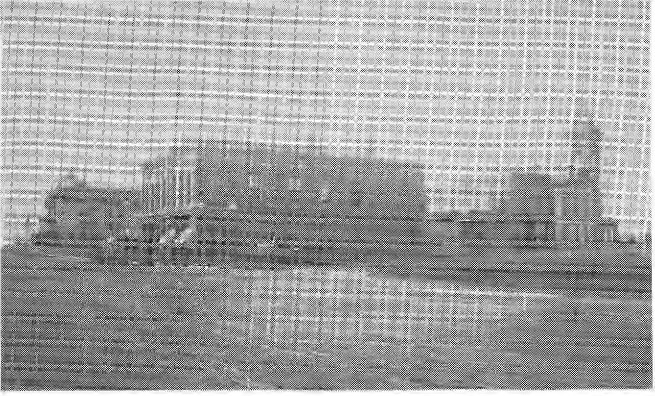
DETROIT, .MINNESOTA, 1890: Washington Avenue and Holmes Street Ivlinnesora Hotel, left; Hamilton Block, center;
Courthouse, right
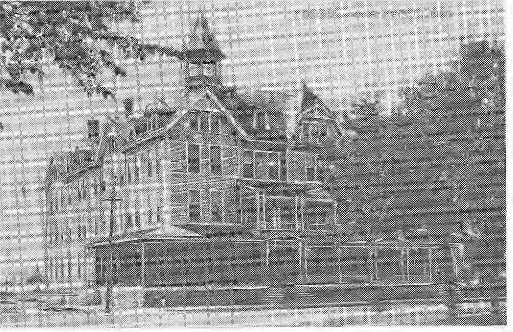
The Minnesota Hotel: Built in 1883 on the corner of Washington Avenue and Frazee Street, it\.vas destroyed by fire in June, 1915.
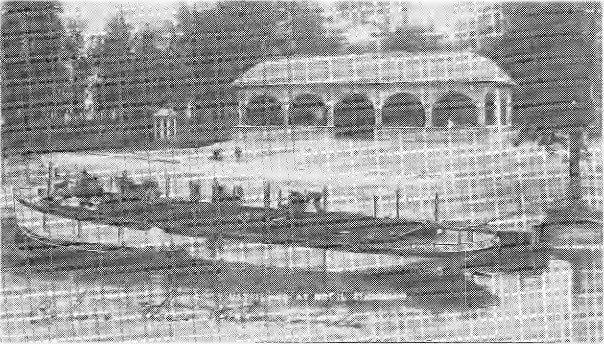
The "Mayflower" at Shoreham, 1911

Street Scene in Detroit, 1903
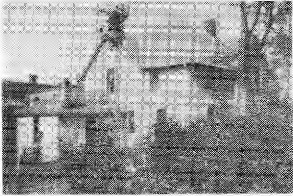
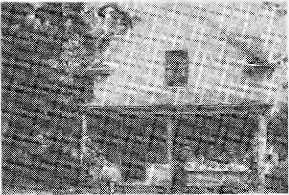
Washington Avenue Home Until 1922 Lake Avenue Home 1922 - 1933
The Dix Family
Much of the information that follows has been taken from a genealogy of the Dix and Davis families prepared for my great uncle, George F. Dix of St. Paul, by Loea Parker Howard, Monument Street, Concord, Massachusetts, March 10, 1938. The name Dix, it
is believed, ultimately was derived from the names Deekes and/or Dickes. Examination of numerous records from a variety of sources indicates that Edward Dickes (Dix), who was born in England in 1611 and came to Massachusetts Bay in 1630 with Governor
John Winthrop and the Puritans, is the first generation in America of that branch of the Dix family which includes our ancestors.
The Puritans first settled Charles River. The next year peninsula on the opposite shore
at the mouth of the they moved to the where there was a
better supply of water. Here, known asTrimountainthey began Boston.
among threehills
the settlement of
Since there was not enough land to afford a good living on the peninsula ofTrimountain,the governor and council gave permission for settlements in the nearby country further up the Charles River. One group under Lt.
Governor Dudley settled Newtown, which is now Cambridge. Another group under Governor Mayhew and Sir Richard Saltonstall, settled further upstream at a place which they named Watertown. Here Edward Dickes was a select man in 1650 and a constable before
that. These were important elective offices.
Edward Dickes left a will which he made in 1660, the year of his death. There is also an inventory attached to the will, and these two documents provide some information about how people lived in those early years in America. The provisions he had in
his will for his wife are interesting,
"Whereas I did receive some estate of my wifes that is now in the vallew of twenty pounds and ingaged myself as doth appear by a bond in the hands of Ensigne Shearman to make it good again this is mywill that my said loveingwife shall
have the same sume truly payd unto her in thesame specie I received it as neere as may be,
with five pounds more added unto it. And also it is my will that my wife shall inhabit my dwelling with my children if shee please and that my sonne John Dickes shall yearly provide her with six loads of wood cut from her owne ground so long as there
is any and failing to make up yearly from my land that same quantity well cut and brought home to her doore, provided that if my wife can more comfortably provide for herself then she is at liberty so to do, and my son John shall be ingaged to allow
so much yearly as her house roome and wood before specified shall be valued at& this continue as long as my wife remaine awidow, and upon her marriage he is free of thisingagement.
Edward Dickes died only 30 | years | after | the |
settlement of Boston at the age of | 49. |
Afew years after coming to Watertown, Dickes was designated as a proprietor, as distinguished from an inhabitant or a townsman, and as such was entitled to share in the distribution of all lands belonging to the plantation.
He built a small house and a barn on 14 acres that had been cleared of forests. His livestock included six cows, four oxen, a bull, a colt and seven swine. Judging from the quantity of grain, butter and cheese listed in his inventory, dairying may have
been the chief occupation of the household with his wife, his son and three daughters helping with the work. An average wage at that time was about 60¢ a day, butter sold for 12¢ a pound, and the best land could be purchased for $5 an acre.
Following is a description of his house and property as indicated from available records and from the inventory which he provided
The dwelling was small, and scantily provided with bare necessities for plain living. The low, one-story house probably had, at first, a single large room known as the11ha ll ,11which
would now be a living room and it contained a fireplace. It was the room for cooking, eating and family gathering. When the family became larger, a room called the11pa r l or11 was
added on the opposite side of a small, front entry. This was used chiefly as a bedroom. Under these rooms was a cellar. There was no attic. The loom and spinning wheel are listed in the inventory
as being in the cellar.
It was customary to build two chambers over the hall and the parlor, but the early death of Edward Dickes probably prevented this from being done. A11 new roome11 had been built back of the other
two rooms. Here were stored the family supplies for there was no village in the plantation, nor any stores where supplies could be purchased nearer than Boston. The layout described here was the customary one among the first settlers whose task it
was to clear the land and build the long stone walls that fenced their fields and meadows.
There was a good supply of cloth in the house, probably home-spun from wool and flax raised on the place. The dishes were of wood, pewter and iron. There was no silver nor glassware. Neither tea nor coffee were known in Old England or New England until
the tea ships began to visit China about 50 years after this will and inventory were made. There was no use for cups and saucers until that time. Every inventory does mention, however, a generous supply of beer and cider.In 1722 Deacon Livermore of
Watertown was paid two shillings six pence for going to Boston to purchase gin to be used at the11Church Rais i n'.11Potatoes were unknown in New England until after
1700.
There was which was, of11 houre11 glass mentioned, but fireplace were sword.
a library of "olde books ,11one of course, the Bible. There was an and a11la nthorne .11No pictures are on the pine sheathing above the a fowling piece, a
musket and a
The twelve lots and grants listed in the inventory, comprising some 300 acres, were the chief assets of the estate
John Dix: B. Sept. 4, 1640; D. Nov. 7, 1714
He was the son of Edward and Jane Dickes and married Elizabeth Barnard January 7, 1670. TheBookof Ancestors ofthe Society ofColonialWarshas
the following record: "John Dix, Watertown, 1640-1714, a soldier in King Phillip's War" (1676).
King Phillip was chief sachem of the Wampanoag Indians in America and the son of Massasoit. His name was Metacomet, but the English gave him the name of Phillip. In the 1660s relations between the Indians and English deteriorated. As the English grew
stronger and more numerous they began to interfere in Indian affairs, and in 1671 the Plymouth authorities demanded that the Wampanoags surrender their arms. Phillip consented but many of his followers did not, and measures were taken to enforce compliance.
Finally, Phillip went before the authorities and agreed to pay an annual tribute and not to sell land or engage in war with other Indians without the consent of the Plymouth government. In 1674, however, when three Wampanoags were executed in Plymouth
for the alleged murder of an Indian informer for the English, Phillip could no longer hold his followers in check, and by June of 1675 war with the English began.
Connecticut had taken defensive measures in advance, but Massachusetts and Plymouth were slow to act and suffered great losses. By the spring of 1676, however, Indian power began to wane. The Indians had been unable to plant crops and were more poorly
armed than the English. In August Phillip was captured by the English after being betrayed by an Indian traitor. While trying to escape, he was killed by another Indian. The head of Phillip was sent to Plymouth and set on a pole in a public place
where it remain for a quarter of a century. The struggle in southern New England now ended, but it continued along the northeastern frontier until 1678.
John Dix, B. 1672; D. 1726
Son of John and Elizabeth (Barnard) Dix, he was born March 6, 1672, and was married to Martha Lawrence of Watertown on November 29, 1697. They lived on a farm that in 1938 formed part of the Walter Fernald State School grounds on Trapelo Road, Waltham.
John Dix, B. May 18, 1702; D. June 11, 1787
He was the son of John and Martha (Lawrence) Dix and was married to Mary Cooke of Watertown on September 28, 1726. Her ancestors were the town millers of Watertown. He added many acres to the farm on Trapelo Road and served as a selectman of Waltham
for several years.
Jonathan Dix, B. March 13, 1745
He was the son of John and Mary (Cooke) Dix, and was married to Sarah Viles in 1768. She died in 1781, and in 1786 he moved to Newton where he was a wheelwright. He also saw service in the Revolutionary War. In the book,Soldiersof theRevolutionary War,published
by the Commonwealth of Massachusetts, there is the following record: "Jonathan Dix (b. 1745) Waltham, private in Capt. Abraham Pierce's Waltham Co.; marched to Concord on the alarm of April 19, 1775. Also in the same company, March 4 to March 8, 1776,
marched at the request of Gen. Washington at the taking of Dorchester Heights." Near the city hall on Waltham Common there is a large block of cut granite, and on it a bronze tablet bearing the names of the Waltham men who served in the War of the
Revolution. Jonathan Dix's name is included.
Stephen Dix, B. February 3, 1771; D. 1840
The son of Jonathan and Sarah (Viles) Dix, he, too, was a wheelwright, and resided in Waltham and also in Concord. He was married to Lucy Curtis onMay 10, 1795. The minister wno baptized their children, Reverend Ezra Ripley,
lived in a home that was on land that was part of the battle ground of 1775. In 1775 it was the home of Reverend William Emerson and later the home of Ralph Waldo Emerson and Nathaniel Hawthorne. Nearly opposite of this house, and in full view of
the battle ground is the "Bullet Hole" house. At the time of the Concord fight, Elisha Jones and his son, Thomas Jones, lived here. It was they who later bought the wheelwright shop from Stephen and Lucy Dix.
StephenAugustusDix, B. January 17, 1796: D. 1832
He was the son of Stephen and Lucy (Curtis) Dix, and was married to Cecilia Davis on December 12, 1792. He was a dealer in paint and glass with a store located at first on Union Street in Boston across from Faneuill Hall and later on State Street. From
1818 to 1832, the year of his death, his place of business and his residence were on Tremont Street opposite the Common, then called Common Street.. He owned a pew in the Cathedral Church of St. Paul which was near his home. He died before he was
40, and John Doggett, a successful merchant in glass and carpets, was appointed to serve as guardian of his minor children. Later a young man from Roxbury, Mr. Williams, became his partner and, after John Doggett retired, the firm becameknown as
Williams and Everett, prominent in Boston. Records indicate Cecilia Dix was married a second time on February 5, 1837 to Henry Cunningham.
StephenAugustusDix, Jr. B. May, 1827, Boston
February 16, 1890, Minneapolis
He was the son of Stephen A. and Cecilia
{Davis) Dix. For about 20 years before the family moved to Detroit in 1880, he was music critic for theBostonTranscript,and, according to family members, he was a gifted pianist having a natural
ability to play selections by ear. The Boston home was a popular meeting place for musicians, and it was customary on Sunday evenings for young people to gather there to sing familiar church hymns and gospel tunes.We do know from a letter he wrote to a sisterAugust, 1846 that as a young man he traveled to the rnidwest visiting St. Louis, Chicago, Buffalo and places in Ohio and Iowa. The letter suggests he was trying to determine
what he wanted to do with his life. He wrote, in part: "I am waiting with anxious expectation for some particularly brilliant path to open up to me, and, after becoming decently wealthy, to make myself miserable by selecting a wife from the middle
ten thousand in Boston and settle into a steady, sedate and moral person...'' His mid-America travels were not without difficulties. During a trip on the Mississippi from St. Louis to Rock Island, Illinois the steamboat ran aground for fifteen
hours on a sandbar, and a journey by stage coach from Rock Island to Chicago, 170 miles, took three days and included, as he reported, "all the horrors of travel." He enumerated these horrors.11••• For three whole nights I got not a wink of sleep, besides being jolted to death, wet through to the skin, and in constant danger of being upset. I assure you, what with finding large rivers where you could float a ship, getting stuck in muddy sloughs and ravines, riding over prairie where the sky and earth meet on every side, stinted to one meal a day and that composed of bacon served up in a log cabin with only one ioorn and a person on the bed shaking with fever and ague, with mosquitoes and other vermin constantly annoying you, to say nothing of nine people inside and three outside with a quantity of baggage and the stage the whole time at an angle of forty-five degrees .. "
He was married October 23, 1850 to Louisa Amelia Woodman, the daughter of George and Louisa Rebecca (Gore) Woodman, who was born August 25, 1828 in the Jamaica Plain home in Boston of her grandfather, Paul Gore for whom Paul Gore street was named.
Before her marriage she was a teacher at the Dwight School.For a few years after their marriage their residence, as given in the Boston Directory, was 11 Warren Street, the home of her father, George Woodman, who was employed at the Custom House. The home which they occupied when he was music critic was
located at 53 Dwight Street, then in the newest residential section, referred to by some as"the hub of Boston."It was some time in the 1870s that the family encountered hard times when the father first lost his position as music critic and then as secretary of the Boston Elastic Fabric Company. The eldest son, Charles, who was troubled with rheumatism in
Boston had gone to Detroit in 1873 where he thought he might find some relief in a change of climate. He was engaged in the mercantile trade there, and he urged the family to join him. In the spring of 1880 father, mother, and baby, Louisa, went
to Detroit. The other three children, George, Caroline and Adeline, who were attending Roxbury Latin School, followed at the end of the school year, arriving in Detroit on July 3, 1880. In memoirs which he wrote later George Dix described the
Fourth of July celebration that year in Detroit when, instead of cannons, anvils were used to make a clamor, and the day's events concluded with a dance at Teague's barn attended by a huge crowd.George and Caroline were married a few years later, and the parents moved to Minneapolis where she managed a boarding house, and where he died at the age of 64 on February 16, 1890. TheSt.PaulPioneerPresshad
this comment about him in an obituary:11 Stephen A. Dix was a very prominent figure in the coterie of old school journalists who made Boston their headquarters in the ante bellum days. For nearly twenty years he occupied
the position of music critic on theBostonTranscriot.Outside of his newspaper duties, Mr. Dix was a wonderfully genial man, and in their time was an intimate friend of both Daniel Webster
and Charles Sumner, as well as other choice spirits and politicians of lesser note.•.."Louisa (Woodman) Dix lived to be 90 years old. She died September 21, 1918 in Minneapolis at the home of her daughter, Caroline (then Mrs. Charles G. Sturtevant). She was active in the Unitarian Church in Boston and in Minnesota, and a comment in
her obituary points out that11 she was a pioneer and always a devoted worker for the cause. Her friends now living will readily recall her charm and personality, her ready wit, and her great strength of
character ...11 Both Stephen and Louisa Dix are buried in a family plot at the Forest Hill Cemetery, Jamaica Plain, Boston.Some information follows about the distaff or female branches of the Dix-related families, some from records in family Bibles, and, for the Davis family, from a published genealogy,TheDavisFamiliesofEarlyRoxburyandBostonby
Samuel Forbes Rockwell, Andover Press, 1932.The Gore, Davis and Woodman families, who were among the first residents of the Boston area, began to merge in 1793 when Paul Gore, Jr. of Roxbury married Mary Davis whose family had resided in Roxbury from the mid-1600s. The father of Mary Davis,
Ezra, also served in the Revolutionary War. Records include this report: "Ezra Davis, Roxbury Sergeant in Capt. Lemuel Childs 3rd Rox co., Col. Williams Regt. which marched on the alarm of April 19, 1775.11 Paul Gore.
Jr. was born January 7, 1767 and died September 6, 1853, and Mary Davis was born February 25, 1772 and died August 24, 1855. It was their daughter, Louisa Rebecca Gore (B. October 19, 1804; D. August 4, 1863), who married George Woodman of Newburyport,
Massachusetts February 27, 1825, and it was their daughter, Louisa Amelia Woodman, who married Sptephen Augustus Dix Jr. in 1850.GoreFamily. John Gore and his wife, Rhoda, came to Boston from England in 1635 and settled in Roxbury where he had been granted land. His son. John Gore, Jr. married Sarah Gardner whose family also came from England in 1635, and they subsequently became the owners of much land in both Roxbury and Brookline. The Isabella Art Museum, located on the Back Bay, was founded by members of this family. The Gore family belonged to First Church whose minister, from 1632 to 1690, was John Eliot, known as the "Apostle to the Indians," who translated the Bible into the Algonkian Indian language.
WoodmanFamily. Edward Woodman, his wife Joanna, two sons and a younger brother also came to Boston in 1635, embarking at Southhampton April 6 and arriving June 3. He was a mercer (dealer in textiles) from Mulford, England. He was one of the first selectmen of Newbury, and, in the first division of town land, he received one of the larger grants, 120 acres. The rule agreed upon in London in 1629 by members of the company who settled Massachusetts was this: they gave to each settler
¼
200 acres for every 50 pounds each put into common stock and so in proportion. "Such adventurers as send over any person were to have 50 acres for each person. Every person who transported himself and family to New England at his own expense should
have50 acres."
Some information about the children of Stephen Augustus and Louisa (Woodman) Dix follows:
Charles Woodman Dix:Born in Boston, he came in 1873 at the age of 22 to Detroit where he thought hecould improve his health. He was married June 17, 1877 to Lillie E. Wood whose father, John E. Wood,
a native of Gloucester, Rhode Island and a captain in the Civil War, came to Minnesota in 1871 as a missionary of the Baptist Society, and to Detroit in 1872 as pastor of the Baptist Church.*Drake'sHistory_of_Roxbury,a copy of which is available at the Minnesota Historical Library in St. Paul, has numerous references to the Gore and Davis families, as well as a picture of the Gore mansion
at Jamaica Plain, Boston.10
Charles Dix was engaged in the mercantile trade in Detroit. He served about ten years as postmaster, and was elected village recorder for three terms before his death August 27, 1896 at the age of 45. He was a pioneer member of the Masonic Lodge
and the Unitarian Society. His widow, known to us as "Aunt Lil,11 worked atBlandings Department Store for many years. She died August 19, 1946.George Frederick Dix: He was born in Boston October 27, 1859 and came to Detroit on July 3, 1880. He was married there on June 15, 1882 to Eleanor Amanda Dunning. While in Detroit he worked at his brother's store, and also served as village recorder. In 1883 he secured a position as clerk at the White Earth Indian Reservation, and it was while he was there that land north of the Reservation was opened for settlement. Several of his friends established 160 acre claims, but he did not, something he later regretted. The Homestead Law required claimants to put up shacks on the property and establish residence by staying for several days four times a year for two years and then paying $2 an acre.
At White Earth he was in charge of the government warehouse where food and supplies were issued to the Indians. In 1885 the family, which now included a son, Warren, moved to St. Paul where he was employed by Maxwell and Seabury Wholesale Grocers
until his appointment as Clerk of the Municipal Court of St. Paul in March, 1900. He served in this position for 44 years until his retirement in 1945.Some of the best information we have about theDix fami1y Boston years comes from memoirs written by George Dix. As a youngster he earned about $3 a week as an office boy for the Boston City Flour Mill on the Commercial
Wharf. In those days wheat was ground by mill stones, and the plant had to be shut down one day a week when the stones were dressed with a diamond-edged hammer. The Wharf was also occupied by fishermen and fish merchants, a tough crowd given to
daily brawls which often brought police squads to break up fist fights. At the extreme end of the Wharf was a lobster factory where, he wrote:11 Hundred s of live lobsters were cooked in large kettles every day. Ed Dimmick,
the bookkeeper, would give me a dime, and I would go down to the end of the Wharf and bring back two large lobsters right out of the kettle.111 1
The Dwight Street home was an exciting place, he recalled, especially during the Peace Jubilee, a music festival held to commemorate the end of the Franco-Prussian War, which brought thousands, including President Grant, to Boston for a week of
performances by bands from foreign countries and noted musicians and singers. A highlight was a performance of the "Anvil Chorus." This was done with a chorus of fifteen hundred, a 200-piece orchestra, a large pipe organ, and twelve anvils played
by red-shirted Boston firemen with a battery of cannon outside of the hall to provide appropriate emphasis.About 50 years after leaving the White Earth Indian Reservation, when she was living in St. Paul Eleanor (Dunning) Dix wrote some reminiscences about the White Earth experience.
"The Reservation consisted of a government boarding school for girls and boys, fully equipped; a hospital; churches, one a sort of Episcopal Missionwith Rev. Gilfillan as rector; and government officeswith the
usual force of clerks.The government buildings were on the main street where the Post was located. This was the place where the Indians came once a month for their rations and carried them home in sacks on their backs. Also on this narrow, bleak street were two hotels,
run on anything but the European plan! One called the "Head Quarters" was very plain and ugly with a lop-sided porch and an in-growing roof simply a place where travelers halted to rest their horses, and as there was no speed limit, their exit
was usually quite snappy. Across the street stoodanother bui1ding wh re gue5t5 were "taken in" nd made most uncomfortable! Across the front of this structure was stretched the auspicious sign, "Hind Quarters." Naturally
the stranger was quite confused as to his choice of "Quarters," but in either case felt sure that he had been misguided.The Indians had a way of walking in upon one very informally, and with moccasins on their feet did it with little warning. One such unannounced call stands out prominently in memory. The living room in our log house had been thoroughly swept and
left with an open window for fresh "air conditioning." Upon returning to close the window,wewere startled to find an old Indian with feet propped upon the stove, sitting in an easy chair and smoking his pipe,
apparently enjoying all of the comforts of home. When completely rested, he rose quietly, grunted his thanks and slipped out through the open window which he had entered."The marriage of George Dix and Eleanor Dunning created a relationship between my father and mother. George Dix was my mother's uncle, and Eleanor Dunning was my father's aunt. Their long marriage, which included the observance of their 65th wedding
anniversay in 1947, ended when he died March 29, 1950.They were the parents of four children, all of whom lived in St. Paul:Warren,born April 26, 1883, married Tullibelle Kroshus, one son, Donald. Some years after her death he married Anne Wikeen;Marjorie,born
October 7, 1888, married Daniel Ilsley York, three children: Warren, Priscilla and David;Helen,born April 17, 1898, married KennethW. Wright, two children, Nancy and Janet. A fourth child,Eleanor,born April 12, 1895, died December 2, 1896.
Adeline Whiting Dix. She was born in Boston in 1866 and came to Detroit with her parents in 1880. She was married in 1898 to George Elliott DeForest who was born in Illinois in 1864. They had one son, Elliott, born in 1900. George DeForest died in 1948 and Adeline died in 1956. Elliott DeForest graduated from Yale University and served in World War I, He was married in 1928 to Helen Tyson Hart of Spokane, Washington, and they lived in Seattle where he was engaged in business. They had three sons: Douglas, born in 1931; Stephen Elliott, born in 1933, and Winston Hart, born in 1934. Elliott died in 1977, and Helen in 1985.
LouisaGoreDix. She was born in Boston in 1868, and also came to Detroit with her parents in 1880. Later she moved to Minneapolis where she worked for a Title Insurance Company. In 1892 she married John C. Westley, an emigrant from London, England who worked for the Minneapolis post office. They had two children, Alice and John Dix, both born in Minneapolis. John C. Westley died in 1928, and Louisa Westley in 1959.
Alice Westley was born in December, 1895, and, after high school, studied piano in Boston and later taught piano in Minneapolis. In June, 1919 she married Charles D. Bigelow of Boston, and they moved to Austin, Minnesota where he was comptroller
for the Hormel Meat Packing Company. They adopted a baby, Elizabeth, who was born in July, 1928. Elizabeth was married in 1949 to Glenn W. Knopf, and they had three sons: Charle& Thomas and William. Charles Bigelow died in 1947, and Alice
in 1982.John Dix Westley was born in August, 1909. He attended school in Minneapolis, studied at Northeastern University and spent two yearsinphotography work at Yellowstone National Park. In Minneapolis he was very active
in the Hennepin Avenue Methodist Church. During World War II he served as a staff sergeant in the IntelligenceSection of the Army Air Force. He was married in September, 1949 to Angelaw. Stull, and they have
two sons: John-Mark and Peter Dix. A third child, Sarah, died at the age of 11. In 1954 they moved from Minneapolis to Everett, Washington and the next year to Seattle when John began to work for the city. He retired in 1974, and now serves as financial
secretary of the Retired City of Seattle Employees. John and Angela also serve as volunteers for a neighborhood school, working with elementarygrade pupi1s.Caroline Churchill Dix
Born: April 6, 1864, Boston, Massachusetts Died: March 5, 1957, Detroit Lakes, Minnesota
She came to Detroit with her parents when she was 16 years old, and taught the first school in the school house in Section 29, Erie Township. She was married September 12, 1883 to Arthur Melvin Blanding, who was born August 28, 1859 at Sherburne,
New York, the third child of Henry and Artemessia (Holmes) Blanding. Arthur Blanding was a merchant, and in 1887 the Blanding& Smith China Shop was established in Detroit, and this later became Blandings Department
Store. Arthur and Caroline(Dix) Blanding were the parents of three children: Ethel (Holmes Blanding) Hamilton, Henry Dix (Harry) Blanding, and Charles Woodman Blanding. Arthur Blanding died July 21, 1899, about one month before his 40th birthday. (See Blanding Family History).
On August 21, 1909 Caroline {Dix) Blanding was married to Charles G. Sturtevant, a native of Plymptom, Massachusetts whose family came to Lake View Township in 1871. He was a surveyor, and in 1880 he surveyed and laid out the road between Detroit
and Ponsford. He also served as village recorder for Detroit and in 1903 was elected city clerk serving until 1910 when he resigned to accept a position as land and tax commissioner with the Soo Line Railroad. Charles and Caroline Sturtevant then
moved to Minneapolis where the main offices of the Soo Line were located. They lived there until his retirement in 1930 after which they moved back to Detroit Lakes. In 1882 Charles Sturtevant had married Elizabeth Augusta Hanson, a native of
Boston whose family had also moved to Becker County, and they were the parents of four children: Olive Louise (Mrs Charles Hamilton) of Frazee, Minnesota; Percy Granville Sturtevant of Erie Pennsylvania; Francis Hardy Sturtevant of Minneapolis;
and Martha Rolinda (Mrs. Merton R. Melvin) of Minneapolis. Elizabeth (Hanson) Sturtevant died in 1905. Charles Sturtevant died August 22, 1933, and Caroline Sturtevant died March 5, 1957. They are buried at Oak Grove Cemetery at Detroit Lakes.Mrs. Elmer Cox {Olive Sturtevant) of Ponsford was a sister of Charles Sturtevant, and she lived for many years at Cox Lake on property that is adjacent to that which is now owned by Douglas andDennis Hamilton, great grandchildren of Caroline (Dix
Blanding) Sturtevant.The Dix Faaily
Edward Dickes 1611 - 1660
Emigrant: Carne to New England with Puritans in 1630 Married Jane Wilkerson
Owned property in Watertown where he was a constable.
John Dix 1640 - 1714 Married Elizabeth Barnerd Soldier in King Phillips War
John Dix 1672 - 1726 Married Martha Lawrence.
Owned farm on Tupelo Road, Waltham, Mass.
John Dix 1702 - 1767
Married Mary Cooke of Watertown
Added land to the farm on Tupelo Road
JonathanDix 1743 Married Sarah Viles
Fought at Concord April 19, 1775
Lived at Newtown where he was a wheelwright
StephenDix 1771 - 1840 Married Lucy Curtis
Was a wheelwright in Waltham and Concord
StephenAugustusDix, Sr. 1796 - 1832 Married Cecilia Davis
Was a merchant in Concord and Boston
StephenAugustusDix, Jr. 1825 - 1890 Married Louisa Woodman
Music critic:BostonTranscriptCame to Detroit in 1880
***
Stephen and Louisa (Woodman) Dix were the parents of seven children including Caroline Churchill Dix, my grandmother.
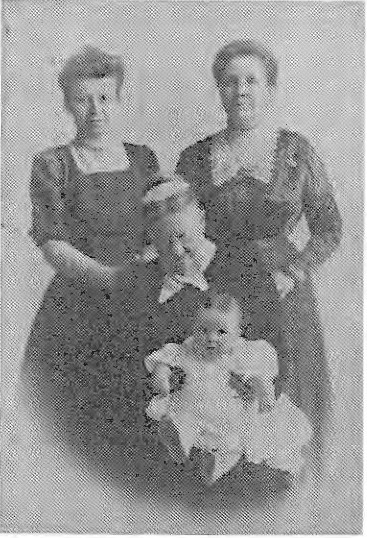
FOUR GENERATIONS- Ethel Blanding Hamilton, Caroline Dix (Blanding) Sturtevant, Louisa Dix, Mary Hamilton.1910.
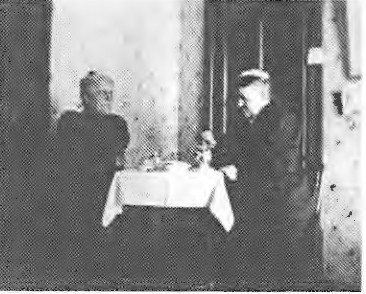
Mrs. Warren S. Dunning (Anna Maxwell), left, and Mrs. Stephan A. Dix (Louisa Woodman) having tea in Minnea polis, early1900s.
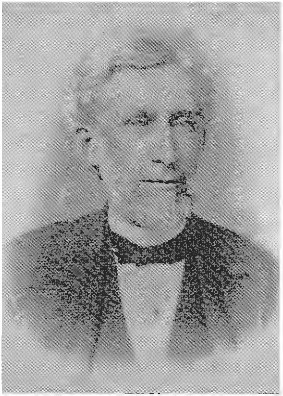
Stephen Augustus Dix, Jr.

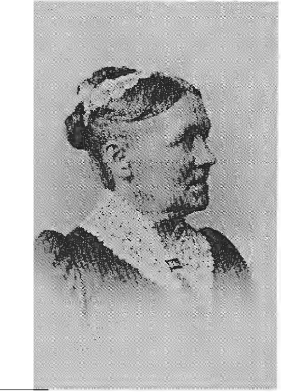
1825 -1890
Louisa Woodman Dix
1828 -1918
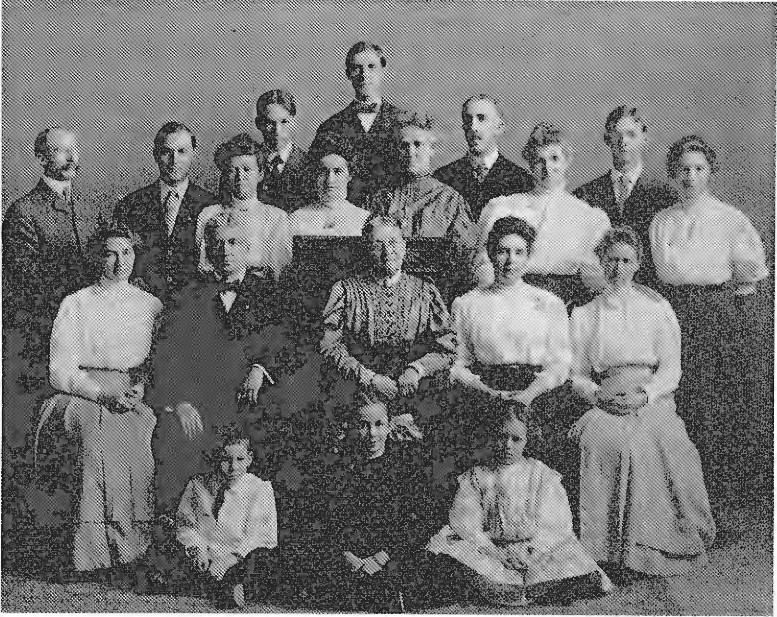
THEDIXFAMILY,early l900s-Standing,left toright, JohnG. Westley,Hubbard A. Hamilton, Ethel Blanding Hamilton, Henry D.(Harry) Blanding, Marjorie Dix, Warren Dix, Eleanor Dunning Dix, George D.
DeForest, Mrs. Charles Dix (LillieWood), Charles Wo<Xlman Blanding, Gail Gieselman. Seated, left to right: Louisa Dix Westley, George F. Dix, Mrs. Stephen A. Dix, Caroline Dix Blanding, Adeline Dix DeForest. Children: Elliot DeForest, Alice Westley, Helen Dix.
The Dunning Family
The Dunning family came to Detroit in 1878 and settled on a farm in Lake View township on the Pelican River between Detroit and Muskrat lakes.
This was the farm of Warrens. and Anna (Maxwell)
Dunning and included two daughters, Jessie Dunning Flick, my natural grandmother, and Mary Dunning Hamilton, my grandmother by adoption.
There is evidence to suggest that the Dunning family existed in England from a very early period, and that some of the early immigrants to America were from families who lived twenty miles northeast of Walkhampton and across from Dartmoor at Trowleigh
and Tawton. This is in the Cornwall peninsula in southwest England
Modern descendants are quite numerous from all of the main branches, but the best classified families of record are the Fairfield County, Connecticut Dunnings and the Orange County, New York Dunnings. These families are descended fromTheophilusDunning,the
English immigrant who was granted land in Salem, Massachusetts in 1642, and probably lived and died there. Since our branch of the family can be traced back to the Fairfield County, Connecticut Dunnings, it is assumed that we are the descendants of
Theophilus Dunning.
As there is no further information about Theophilus Dunning or of his first son, also named Theophilus, it is also assumed that the younger son, Benjamin, who was baptized in Salem January 17, 1647, is second in line of descent. In his adult years this
Benjamin lived in Boston where a son,
another Benjamin, was born. There is this notation in theReports ofthe Boston Record Commissioners:
"Benjamin, son of Benjamin and Mary Dunning, born in Boston March 3, 1697. Benjamin Dunning was a taxpayer in Boston in 1681* and 1685; he was elected Sealer of the Leather March 12, 1682, and a Tything Man** in Capt. Turill1 s
CompanyApril30, 1684."
The Benjamin Dunning who was born in Boston was among those who founded Newtown in Fairfield County, Connecticut in 1711. He died at Newtown March 21, 1739. His first wife is unknown, but in 1710 he married Elizabeth Minor who survived him and later
she married Obadiah Wheeler.
It was Benjamin's son,Michael,who moved to Pownal, Vermont in 1762, two years after the settlement of that Bennington county town in the southwestern part of the state. Michael was born in Newtown July 30, 1730, and
he was married there July 19, 1750 to Abiah Kimberly. He became a prominent citizen of Pownal serving as town clerk and selectman. He died there February 28, 1810, and he is buried at Pownal where his headstone has this inscription: "Honest and industrious
in life, a friend to the poor, a patriot of1 76.11
Michael Dunning was the father of four children includingJosiahDunning,who saw service in the Revolutionary War. Josiah was born October 7, 1755 at Newtown, Connecticut, and moved with his family
to Pownal, Vermont in 1762. He was married there in 1777 to Hannah Seelye, probably related to aprominent famiiy iiving in Williamstown, Massachusetts, just south of Pownal. For most of his life Josiah Dunning was a farmer
in the Pownal area but spent his last years with a son in Williamson, New York and a nearby town, Sodus, where he died February 27, 1842. He is buried in Pleasant View Cemetery at Williamson, New York.
*SealerofLeather was an important post in Colonial times when leather was so essential in the daily lives of the colonists. Certain standards had to be established, and the Sealer was an inspector who determined whether leather goods met an acceptable level of quality.
**T thin _Man was the chief man of a tithing which, under British law, was a small administrative division usually consisting of ten men with their families. Many of his duties were similar to those
of a constable or a peace officer.
His military record in the Revolutionary War includes that which is documented in published regimental rolls in Vermont and also in files of the National Society of the Daughters of the American
Revolution at Washington, D.c., and his personal
account of service with Benedict Arnold in 1775. The Vermont and DAR records list him as an Ensign in Capt. Eli Noble's Company, Col. Herrick's Regiment in October, 1780. In July, 1781 his service record indicates he was a lieutenant in Capt. Noble's
Company and Col. Ebenezer Walbridge's Regiment.
His son, John Dunning, had some records of his father's war service, and in 1892, a year before his death, wrote this letter to a granddaughter, Sarah Dunning, in Detroit:
Valparaiso, Indiana
July 21, 1892
Dear Sadie:
In answer to your inquiry as to my father's service in the Revolutionary War in order that you may become a member of the Minnesota Societywhose relatives assisted in the American Revolution.
My father, your great grandfather, Josiah Dunning, was in the historic Bennington Battle on the 16th of August, 1777which was always celebrated as a holiday instead of the 4th of July, and was a long time in service
and his record stands high in the War Department in Washington.
I also send you a copy of a certificate made in Washington with the names attached of the Indiana Society of the American Revolution. It will bearinspection and is suffici nt guaranteefor you and
all of my grandchildren to join the society.
With kindest regards for all, Grandfather Dunning
While the War Department records John Dunning refers to are not available, we do know that on October 4, 1833 when he was living with a son, Cephus, in Williamson, New York, Josiah Dunning personally appeared before a judge in the court of Common Pleas
for Wayne County, New York and gave an account, under oath, of his service at Ticonderoga, Bennington and Saratoga. This declaration was made when, at the age of 78, he applied for a pension. The declaration for some reason was returned by the Pension
Office in Washington and then was amended
and withheld. It was later re-submitted to the Pension Office, but it is not clear what disposition was made of it. There is a temptation to assume that since this early service was with Benedict Arnold, who later turned traitor, that there may have
been some reluctance to act upon it, but this may be quite incorrect. From the National Archives in Washington I have received photocopies of the information Josiah Dunning sent to the Pension Office in 1833, and these are in the Dunning family file.
The copies, unfortunately, are almost impossible to read, but we do have the same information from earlier inquiries by family members.
According to Josiah Dunning's personal declaration, his Revolutionary War service began at Pownal, Vermont in April, 1775 when he was 20 years old and assisted in organizing a volunteer company to capture Fort Ticonderoga. Some of the volunteers marched
to Castleton, Vermont where Colonel Ethan Allen took command. The other volunteers, including Dunning, marched to Stevenboro, {now Whitehall), where they joined forces under the command of Colonel Benedict Arnold and then took a schooner down Lake
George arriving at Ticonderoga the morning after the surrender of the garrison to Allen and his men. Dunnning's account tells of a dispute at Ticonderoga between Allen and Arnold as to which one of them should command the troops - Arnold because he
held a commission from the Continental Congress or Allen because his volunteers had captured the fort. Swords were drawn and muskets raised before the dispute was resolved with a stipulation that a duel would be fought after the war .
Dunning remained with Arnold and his soldiers when they left Ticonderoga to go by schooner to Crown Point. Later, according to his sworn statement, he served at Fort George at the head of Lake George and in 1776 was one of the guards of the public stores
at Sunderland, Vermont. In July, 1777 he was an orderly-sergeant of a company of militia at Pownal, Vermont. When General Burgoyne was defeated at the Battle of Bennington on August 16, 1777, Dunning previously had been dispatched on an expedition
seeking reinforcements. He later was stationed again at Fort George and was with the army at Saratoga when Burgoyne surrendered to General Horatio Gates on October 17, 1777. Burgoyne's surrender at Saratoga is regarded as a major turning point in
the war, and subsequently led to an alliance between the United States and France.
The official and personal records relating to Josiah Dunning's war service also disclosed some other Dunning relationships of interest. Two of his children, Martin and Eleanor, brother and sister of John and Cephus, married children of Abiathar Angell,
another resident of Pownal, Vermont who also saw action in some of the major conflicts of the Revolutionary War. Martin, who was born in 1784 and died in 1832, married Lucy Angell, and Eleanor Dunning, who was born in 1789 and died in 1863, married
Joseph Angell.
Abiathar Angell was a captain in the Revolutionary War serving under Colonel Brewer. He was at the Battle of Bunker Hill, the siege of Boston, the expedition to Canada, and Battle of Bennington and the surrender of Burgoyne at Saratoga. Born in Rhode
Island in 1748, he moved to Cheshire, Massachusetts in 1771, and it was from there that he led troops to the Bennington battle. After the war he settled at Pownal, Vermont where he married Lucy Bennett, whose parents, Joseph and Eunice (Ward) Bennett
were among the founding
familes of Cheshire, Mass.achu*setts and.
later, as
members Abiathar in 1830.
of the Shaker Society settled in New York. Angell died at Bennington Center, Vermont
An obituary of Lucy Angell Dunning written by a niece, Finette Dunning Hunt of Valparaiso, Indiana and a granddaughter of Josiah Dunning, includes a description of some family items apparently inherited from Martin Dunning's grandmother. Listed are
a "kitchen chair, a small stand over 200 years old , and a looking glass that was brought over on the Mayflower." There is no further information about these antique furniture pieces, but if, in fact, any of them existed or ultimately were in the
possession of Finette Dunning Hunt, they are gone because she left her furniture and some other articles to a niece, Louisa Dunning Corbett, and these were destroyed later by fire while in storage.
*The Shaker movement began during the Quaker revival in England in 1747. Members of this celibate and communistic sect began corning to America in 1774. In 1780 there was a religious revival in New Lebanon, New York and in 1787 the first Shaker Society in America was established there. They believed in celibacy but replenished their ranks by adopting orphans and converting adults.
Josiah and Hannah Seelye Dunning had twelve children, includingJohnDunning,my great great grandfather who was born at Pownal, Vermont April 3, 1802. Much of the information that follows comes from
records and correspondence which he kept. He lived to be 91, moving as a young man from Vermont to New York and then to Indiana where he spent the last half of his life. In some of the notes that he left, he describes being brought up to learn farming
and received such schooling as was generally available in the rural areas of the New England states at that time. At the age of 18 he went to an academy in Massachusetts that prepared students for college and was only 30 miles from his home, He then
attended Williams College in Massachusetts which was just three miles from his father's farm. He did not have the means to continue very long at college but was able to qualify for what he describes as "keeping school," a rural school teacher. He
was engaged in this during the winter months, "which I did very satisfactorily and quite creditably at that time for a young man."
He continues: "In the course of my school keeping an attachment grew up between me and a young lady scholar who, after several years, became my wife. In the course of events our family increased to four three boys and a girl. My oldest boy died in his
eleventh year on December 31, 1835, the first death in the family which was followed in little more than a year by the death of my wife and a babe about two months old which seemed a great calamity. This left me with three children, the oldest eight
years (Warren) and the youngest four, and my father who was ill with palsy at the age of 80.11
During these years he was married to Lucy Rose who was born March 10, 1807 at Pownal, Vermont and died March 8, 1837 at Sodus, New York. At this time he was engaged in the mercantile business in Lyons, New York, and in November, 1840 he was married
to Mrs. Marie (Dougherty) Salisbury, a descendant of the Dutch who first settled Manhattan. She was born March 7, 1809 and died February 6, 1895 at Valparaiso, Indiana.
In 1841 they moved to Rochester, New York, remaining there about a year, then going to Elkhart County, Indiana where a brother, a medical doctor, had a large farm. He worked on his brother's farm for two years and then moved in 1844 to Porter County,
Indiana where he previously had purchased 80 acres of land. He was one of the charter members of
the Odd Fellows Lodge of Valparaiso, and in 1848 was elected Justice of the Peace, and, about that same time under the administrations of Presidents Taylor and Fillmore, was appointed postmaster. From 1855-60 he was again engaged in farming, but during
the Civil War had some recruiting assignments for the Union Army, and in 1864-65 was in the Army Quartermaster Corps in Louisiana. After the war he was in the grocery business and in 1874 was again elected Justice of the Peace, a position he held
for the rest of his life. He died May 16, 1893 at Valparaiso at the age of 91.
He corresponded quite often with his son and daughter-in-law, Warren and Anna Dunning, at Detroit and their daughters, especially Sarah, who usually was referred to as Sadie or Sade. When his son, Warren, died in September, 1889, he wrote to "Sadie,
Anny and all the grandchildren." He told Sadie to look after herself and sent her $5 to get a dress. This letter, written a few years before he died, also included these thoughts:
"We deeply sympathizewith youin the death and loss of so kind and indulgent a father. His loss to you is the same to us in feeling ... But so it is with the human family. Sooner or later we have
to succumb to the will of God. Warren had many friends here. Scarcely a day would pass but someone or more from the country or town would ask me about Warren. All spoke well of him. You must be worn out and need rest. Be as passive and quiet as possible,
let nature recuperate you, and you may live many years and enjoy life. It is not so with us. Our days are numbered. We shall have no cause to regret for more time whencal.led for,"
In the notes John Dunning left about his early years, he mentioned that his oldest son was eight when his first wife died. This wasWarrenSeelyeDunningwho was born November 22, 1827. Describing
the period after his wife died, John Dunning wrote:11Then commenced the harder years of life, but sufficient to say that I was not out of friends nor means for the comforts of life if I needed them...11 By
1840 the family, with John now married to Marie Salisbury, was living in Lyon County, New York before moving to Elkhart County, Indiana when Warren was 15 years old.
As a young man Warren traveled to California during the gold rush of 1849 and spent several years prospecting, apparently without much luck. He then returned to Indiana and was married at Valparaiso on June 15, 1852 to Anna Clark Maxwell. Her family,
originally from England, had settled in North Carolina but moved to Richmond, Indiana, primarily because as Quakers they were opposed to slavery. It was at Richmond that Anna was born January 9,1833. Six children were born to Warren and Anna Dunning
at Valparaiso, two of whom died very young, Lucy Maud of diptheria at the age of 2½ and Marcellus Merritt of scarlet fever at the age of seven.
The others, born at Valparaiso, includedMaryGeneva,born September 10, 1854;JessieFinette,August 16, 1856;LouisaRose,July
22, 1861; and
Eleanor Amanda, June 18, 1863. In 1865 the family moved to Niles, Michigan where Sarah Maxwell was born January 26, 1866. In 1878 they came to Becker County settling on the farm in Lake View where Warren died October 14, 1889 at the age of 61.
Mary Geneva Dunning, who was 24 when the family came to Lake View, was married to George D. Hamilton at Detroit on September 29, 1880. He was born at Two Rivers, Wisconsin April 3, 1856, the son of Henry and Diantha (Smith) Hamilton. He received his early education at Two Rivers and in 1878 came to Detroit where he purchased the newspaper, TheRecord, from
E.G. Holmes. He continued to publish the paper for
33 years, selling it in 1911 to Lou Benshoof and A.
T. Thompson. He opened a real estate and insurance office later, and was among the first to begin marketing wild rice. He also became an authority on aquatic plant life, especially those plants thatere usefu1 in attracting water fow1. He he1d numerous
public offices, serving on the village council in 1881 and later as village president. He was a member of the charter commission when Detroit was incorporated in 1903, and during World War I served two terms as mayor. He was a member of the school
board when the Holmes High School was built and also was active in the work of the city's Water& Light Commission. His brothers, J.E. Hamilton and Henry P. Hamilton, founded the Hamilton Manufacturing Company at Two
Rivers, Wisconsin. They once owned extensive property in what is now the Tamarack Wildlife Refuge in Becker County, including much of the land adjacent to Flat Lake and Egg Lake as well as a site north of Tamarack Lake where they established Balsam
Lodge, several buildings serving as quarters for hunting and
fishing
George and Mary Dunning Hamilton had three children: Hubbard Albion Flick who was born April 27, 1884 and was adopted and his name legally changed to Hubbard Albion Hamilton; Geneva, born April 5, 1885 and died two weeks later; and Gladys Hamilton Correll,
born March 6, 1893 and died December 15, 1930 following complications of child birth. Mary Dunnning Hamilton died August 3, 1931, and George Hamilton on December 15, 1931, exactly one year after the death of his daughter.
HubbardHamilton,who graduated from Shattuck Military Academy at Faribault, Minnesota, was married October 7, 1908 to Ethel Blanding. (See Blanding family history). He served as city treasurer for 14 years, and
was also secretary of the Federal Savings& Loan Association. At one time he was engaged in the laundry business and also had an interest in the Scenic Theatre. His main business concerns ultimately included retail coal,
real estate and insurance. He also took over the aquatic planting and wild rice enterprise started by his father. And he was able, by careful management, to eliminate at the time of his death on August 18, 1951, virtually all of the $48,781 indebtedness
which the Hamilton Block property in Detroit Lakes had when it was left to him and two nieces after his father died in 1931.
GladysHamilton,who graduated from Carleton College 1n 1915, was married February 14, 1916 to Hobart Correll, a native of Clinton, Iowa, who came to Detroit in 1911 and was engaged in the banking and insurance
business. He also served for several years as secretary of the Businessmen's Association. They had two daughters, Diantha and Marcia, who,after their mother's death, 1ived with relatives in St. Paul Diantha with Kenneth
and Helen(Dix) Wright, and Marcia with Dan and Marjorie (Dix) York. Hobart Correll died August 11, 1937 at the age of 47.
JessieFinetteDunning became a rural school teacher after the family moved to Lake View, and she lived in or near Fergus Falls, Minnesota for several years. It was there that she met James Albion Flick, and they were married March 24, 1881 at Detroit. They continued to reside near Fergus Falls but were in Detroit when their son, Hubbard Albion, was born April 27, 1884. Jessie died May 7, 1884, ten days after the birth of her son. Very little is known about James A. Flick except that he died in
Spokane, Washington January 20, 1901 at the age of
50. A death certificate indicates he was born in Pennsylvania and was working in Spokane as a cook. The cause of death was pneumonia, and he was described as white and married. There is no burial information. A census taken June 5, 1880 by A. J. Underwood
at Fergus Falls, Minnesota has this information which is on microfilm at the Concordia College Library in Moorhead, Minnesota: "Flick, James A., white, male, 29 years old and single." The census report lists him as a boarder, and his occupation is
given as post office clerk. The report also states that he was born in Pennsylvania, as was his mother, and his father was born in New York.
LouisaRose Dunning was married December 28, 1881 to George Corbett, a native of Milford, Massachusetts. His parents came from Nova Scotia. The family came to Becker County in the early 1870s where they were largely responsible for getting the first school house built and the first Sunday School organized. After their marriage, George and Louisa Dunning Corbett farmed on land where the Detroit Lakes Golf Course is today and lived in a log cabin where the Country Club now stands. George was also a captain of a boat that ran twice daily in the summer between Detroit Lake and Lake Sally. Later they lived in Huntington Beach, California where he died in 1930, after which she moved back to Detroit Lakes and lived with her sister, Sarah Dunning. Louisa died March 8, 1947 at the age of 85.
EleanorAmanda Dunning was 15 when the family came to the farm in Lake View. She also became a rural school teacher living some of the time with her sister, Jessie, in the Fergus Falls community. She was married to George F. Dix in 1882. This union made my father and mother related by marriage. George Dix was my mother's uncle, and Eleanor Dunning was my father's aunt. See the Dix family history for additional information about the George Dix family and Eleanor Dunning Dix.
' *
SarahMaxwellDunning, the youngest of the sisters, often looked upon her older sister, Jessie, as a second mother. It was Jessie who, after moving to the Fergus Falls area to start teaching, often corresponded with Sarah. Sarah, who never married, worked in the printing office of her brother-in-law, George D. Hamilton, publisher of The
DetroitRecord. This was at a time when newspapers were mostly type-set by hand. Later she operated a Simplex typesetter, a forerunner to the Linotype. On January 1, 1916 she took a position in the city clerk's office in Detroit, serving as bookkeeper for
26 years. She died September 16, 1950.
In an interview with a relative, Sarah Dunning made these comments about her sisters and the brother who died at a young age:Lucywho died at the age of two: "There was a miniature of her that my mother always wore."Mary:"Very
beautiful and attractive in every way. She was loads of fun."Jessie:"Quite a student, lovely girl and lovely disposition."Marcelluswho died at the age of seven: "Celly was the idol
of father. His clothes were kept for many years after his death."Louisa:"She was the spitfire of the family. She lived with Grandma Maxwell in Indiana a good deal of the time."Eleanor:"At
first she taught school in Lake View near the farm home."
Sarah Dunning was the custodian of much of the correspondence, photographs and records relating to the Dunning family, especially letters from her older sister, Jessie, after she moved to Fergus Falls. There is also an interesting letter from her sister,
Eleanor (Mrs. George F. Dix) of St. Paul, written during the Christmas season of 1891, andgiving the following weather report:
"Such weather! Warm and balmy, green grass shooting up and the likes of that. Do I like it? No, a thousand times no! I would like nothing better than a real genuine Minnesota winter, 20 below all the time, lots of snow and a blizzard three times a week
with an occasional drop in mercury to 50 below. I am actually pining for snow. Well, I must stop this or I will be writing an essay on snow instead of wishing you aMerryChristmas."
...Li'notype was the trade and a printing process which, could set a single line of "slug" at a type-high depth for
press.
name for a machine using molten lead, type on a casting or direct printing on a
Jessie Dunning wrote quite often to her sister, Sarah, after moving to Fergus Falls to teach and later to make her home with her husband, James A. Flick. Excerpts from some of these letters, written between 1878 and 1884, follow, and tell us something
about life in the 1880s. All have a Fergus Falls dateline.
January,1878: with a young man. neighbors and stayed etc. Then had a gay
"Last eve I had a sleigh ride We stopped at one of the a little while and had popcorn, ride home by pale moonlight ..."
January,1878: "I must tell you about things that happen at school. I wish you were here to be in my highest arithmetic class. There are two young men in it, each seventeen. They are now in denominate numbers and get along quite nicely. Everett Knowles is one, and is very nice looking. He thinks a great deal of the girls and is never satisfied unless he is sitting beside one of them. Solomon Smith is the other one. He builds the fires and sweeps and is very kind and thoughtful. Gustaf Evender is a little Swede boy. It is hard for him to understand sometimes. Four of the students come from the place where I board. We have nice times in the evenings playing casino..." {Card game).
March23, 1880:"School begins soon and then I will have lots to do. I have a great deal of reading matter given to me and then I have sacks and one hood engaged to be made. I told Mrs. H. today that I was going
to save up all of my crocheting money and see if I have enough by the 10th of August to get me a necklace (gold). Then it won't seem like spending my own money...I am going up to Mrs.H's tomorrow to crimp the ruffle on my
new gown on her crimping iron..."
May 16,1880: "Today is Sunday. I am cleaned up and El is just curling her hair. It takes her quite awhile to comb, you know...We had a present of a new croquet set from one of the Fergus Falls young men...El and I each had a ride last Sunday and a gay ride last evening. We are invited to take a ride next Sunday to Fish Lake eight miles east of Fergus. It seems like everything has turned green in a twinkling of an eye this spring..."
November25, 1880: {This letter was written
from a farm home near Fergus Falls where she lived while teaching country school). "Here I am in
1Norway' but not a bad one. I board½ mile from my school, have a room by myself, table with spread, clean, warm bed, bureau, four windows with white curtains tied back with red ribbons, rocking chair, another chair, sewing
machine, stove with woodbox full of chunks, have fire to get up by. Pay $8 a month. Get $35 for six weeks, then $35 per month. Have plenty to eat, coffee three times a day. I have 30 pupils, mostly boys and girls, but one man is just over 30. The
most advanced student is in the 'tird' reader. They understand very little English. There are some Germans and some 'Norskys1 • The school house is brand new, plastered, stove with drum table and chairs, three long windows
on each side, a real brick chimney, and a belfry on top with no bell, but will have one soon. Oh, we are high-toned Norwegians! The nearest depot is two
miles from here. That will be the way I will go back, take the train at Carlisle. My P.o. is Elizabeth where the farmers go with wheat..."
August28, 1882: This is Sunday, and I am just home from church. Al and I went to hear the new Congregational minister from New Hampshire. He took up a collection for the churches in the East. He said many were in actual want, that they sent their best men west, and they could not begin to supply the churches in the rural districts of New England with ministers. Well, this seems strange. He said that the farming lands had all worn out, and good farmers gone, and Irish Catholics taking their places, and that they really need missionaries worse there today than we do here. And I think it's right for us to help them..."
November22,1882: "All the rage here is skating. I have a pair, but it is snowing today so I fear I shall not use them...We have bought a house in MacLain's Addition. The house is a little white one on Lincoln Avenue. We had to pay $400 down and we have to raise $200 by January 31st. I can't have anything new this winter. Boo! Hoo!...Street cars will go by our house next summer. And if Ma comes to visit she will have something to look at besides O'Briens saloon...Mrs. Craggin is coming to live down here. The Detroitites will all be down here to live before long. Then we will have some fun!..."
October 21,1883: I will write to you this time and tell you about my farm home -- 'a thing of the present'. It is owned by a large company, Ames and French of Minneapolis. It is operated by Charles D. Wright and D. M. Brown of Fergus falls. Mr. Brown is a young laddie and wanted us to come out here and
live for awhile. We have a great big house, very
pretty on the outside, light and dark green, large bay window in the dining room, and folding doors between the dining and sitting room and also between the sitting room and the front room. Nice kitchen and buttery. Our room is upstairs over the dining
room. The N. P. Railroad runs through the farm and if you signal they will stop and let us on and we can go to Fergus at 8 a. m. and return on the evening train so you see it's a place of some importance and very convenient for us...We get our living
and a splendid one, too. Everything one could ask for, and Al gets $25 a month. Our family consists of Mr. Brown, his brother, 21, four hired men, a hired girl and myself. One cow, one calf, a dog, nine big horses. 1, 000 acres under the plow, a large
elevator on the place, also farm sheds etc."
November25, 1883:"Iwish you were here now to stay with me. When Mrs. Brown comes back, I will go to Fergus, and if Al continues to work out here I shall be obliged to get someone to stay with me. If you were
here you could go skating on the rink and go to school also. What will you do on Thanksgiving? Guesswewill stay here and have oysters...11
January11,1884: 11 S 0 you are up to White Earth by this time. What doyou and El busy yourselves about most of the time? Playing
cribbage and the like, I suppose. How long doyou expect to remain at White Earth? When are you coming to stay with me? We have such short days now that I don't accomplish much. We breakfast at nine on buckwheats and coffee;
dine at two on meat and potatoes; sup at eight on oatmeal and milk; retire at ten."
About four months after that letter was written, Jessie died May 7, 1884 following the birth of her son. The minister of the church in Fergus Falls that Jessie and her husband attended wrote this message to "Brother Flick:"
"· ... she was such a pleasant little body, her face so kind and intelligent, her ways so gentle and winning, so neat and tasteful in dress and bearing, that I loved to see her in my congregation, and was always helped by her close and intelligent attention
•..The same kindly manner and good taste was displayed in her home when I called upon her ... so lovingly did she speak of you that I doubt not that she was a delightful companion and a dear good wife. God
grant that the child may live and that you bothmeet her above." --Franks. Sullivan
The Dunning Family
TheophilusDunning
English immigrant; granted land in Salem, Mass. 1642
BenjaminDunning
Baptized, Salem, Mass. 1647; lived in Boston
BenjaminDunning
B. March 3, 1679, Boston
M. Elizabeth Minor, 1710
D. March 21, 1739
One of the founders of Newtown, Conn
MichaelDunning
B. July 30, 1730, Newtown, Conn.
M. July 19, 1750 to Abiah Kimberly Moved to Pownal, Vermont, 1762
D. Pownal, Vermont, February 28, 1810
JosiahDunning
B. October 7, 1755, Pownal, Vermont
M.Hannah Seelye, 1777 at Pownal Served in the Revolutionary War
D. February 27, 1842, Sodus, New York
John Dunning
B. April 3, 1802, Pownal, Vermont M. Lucy Rose (B. 1807; D. 1837)
M.Maria Dougherty Salisbury, 1840
D. May 16, 1893, Valparaiso, Indiana
Warrens.Dunning
B. November 22, 1827, New York State
D. October 14, 1889, Detroit, Minn.
M. Anna Clark Maxwell, 1852
B. Jan. 9, 1833, Richmond, Ind.
D. March 15, 1905, st. Paul, Minn.
Lucy: B. 4/5/1853; D. 10/5/1855 Mary: B. 10/10/1854; D. 8/3/1931
M. Geo. D. Hamilton, 1880 Hubbard: Adopted 1884; D. 1951
Geneva: B. 4/5/1885; D. Two weeks later Gladys: B. 3/6/1893; D. 12/15/1930
Jessie: B. 10/16/1856; D. 5/7/1884
M. James Flick, 1881
Hubbard:B. 1884;D. 1951
Marcellus: B. 6/4/1858; D. 2/28/1865 Louisa: B. 7/22/1861; D. 3/8/1947
M.George Corbett, 1881Eleanor:B. 6/18/1863; D.
George F. Dix, 1882 Warren: B. 4/26/1883; D.
Marjorie: B. 10/7/1888; D. Eleanor: B. 1895; D. 1896 Helen: B. 4/17/1898; D.
Sarah: B. 1/26/1866; D. 9/16/1950
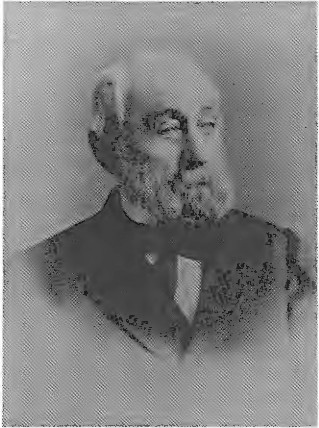
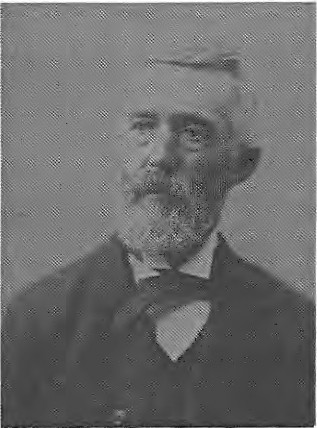
John Dunning 1802 - 1893
Warren Seelye Dunning 1827- 1889
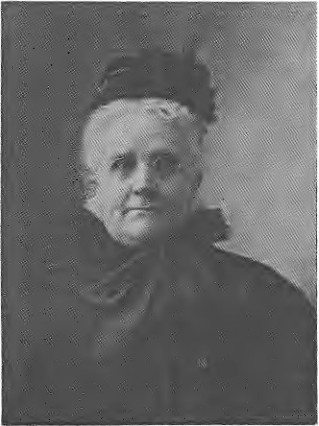
Anna Maxwell Dunning 1833 - 1905
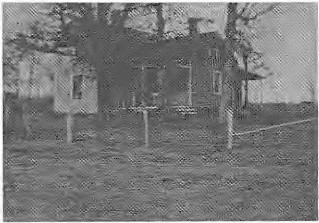
Dunning Fann Home on the Pelic an River in Lake View Township.
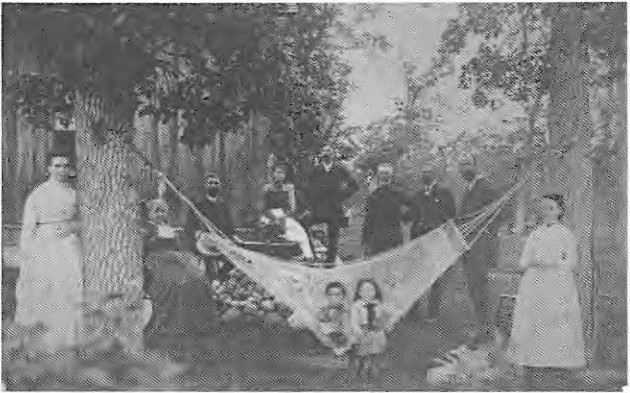
DUNNING FAMILY, 1888: Leftto right: Mary Dunning, Anna Maxwell Dunning,Mr. Marshall, Louisa Dunning, George Corbett, Warren S. Dunning, Mr. Spafford, George D. Hamilton, Sarah Dunning.
Hubbard Hamilton and George Marshall in the hammock.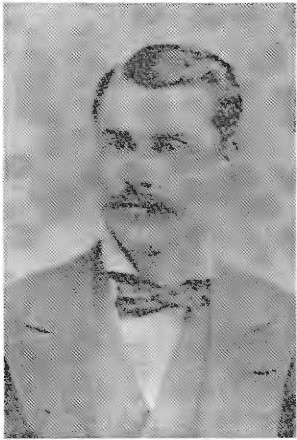
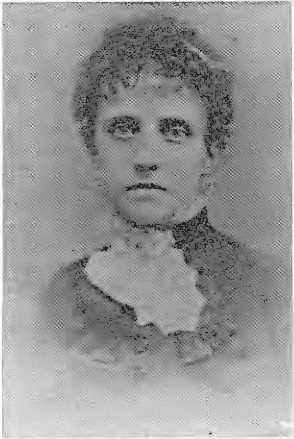
James Albion Flick 1851 - 1901
Jessie Dunning Flick 1856 - 1884
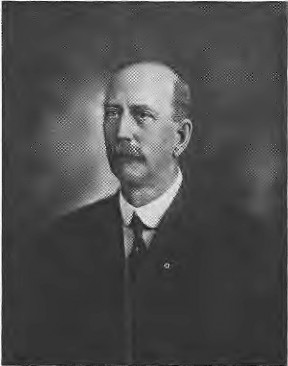
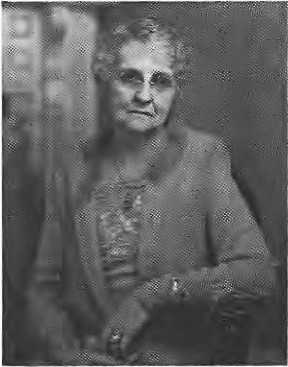
George D. Hamilton 1856-1931
Mary Dunning Hamilton 1854 - 1931
l
1.
1
1-
i
l
Hubbard Albion Hamilton 1884 - 1951
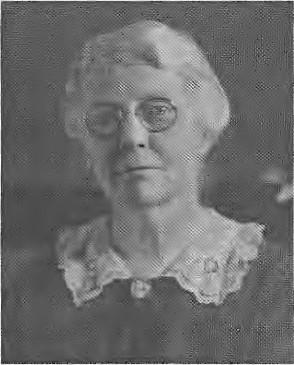
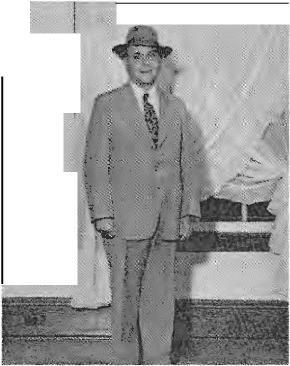
Sarah Maxwell Dunning 1866- 1950
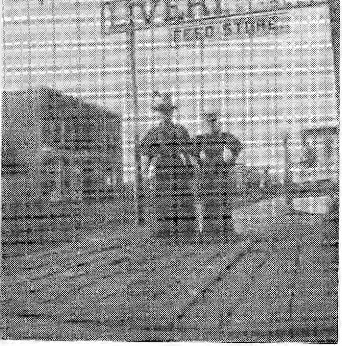
Detroit Street Scene, about 1896
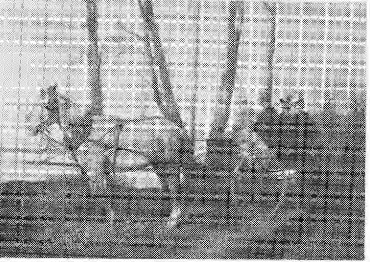
November, 1896 at Long Lake
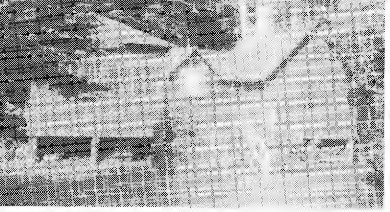

Dining Room and Kitchen at Balsam Lodge George D. Hamilton in 1910 with granddaughter, Mary Hamilton
The Blanding Family
A genealogy of the Blanding family published in April, 1986 by Leonard Clark Blanding of Grand Rapids, Michigan indicates that, as with the Dix family, there probably were different spellings of the name prior to the time William Blanding emigrated
to America in 1639 or 1640. In some of the records, including his will, the name is listed as William Blanton. It is believed, however, that the branch of the family that includes our ancestors began in America with this individual. He was born
April 16, 1611 in England, and, before coming to America, lived at Upton Upon Severn, Worcestershire, England.
He left England during the reign of Charles I when the protestants were being persecuted and came to the Massachusetts colony which the Puritans had established ten years earlier and where he served as a carpenter. He had lost his citizenship in
England, but this was restored in Massachusetts when he was made a freeman on May 10, 1643. In Colonial America a freeman was a citizen who had the right to vote.
He was married in 1641 to a woman who is referred to in his will only as Phebe Blantine and also as Phebe Blanton. He owned land at Muddy River, which is now Brookline in the city of Boston, and he held shares in the Taunton Iron Works. The family
belonged to First Church in Boston, and, before his death on June 15, 1662, included three children, a son, William, and two daughters, Pheebe and Mary. Although he left some property to his son, this was less than it might have been because,
as he states in his will, "...He will not harken to my counsell."
WilliamBlanding, 2nd Generation in America. B. May 2, 1643; D. November 25, 1724
He lived at Rehoboth, Massachusetts, located just a few miles east of Providence, Rhode Island.
The Town Council granted him a half acre of land on the Common on which to build a home, and in 1675-1676 he contributed to the Narraganseth Expedition against the Indians. He was married September 4, 1674 to Bethia Wheaton who was born May 25,
1652 and died April 16, 1709. They had seven children including another William.
WilliamBlanding, 3rd Generation in America. Born May 2, 1676; D. June 19, 1750
He lived at Palmers River, Massachusetts where his name appears in 1718 on the roll of the First Congregational Church and also on the town roll. He was married October 16, 1708 to Elizabeth Perry who died January 26, 1709. In 1711 he had a second
marriage with Mehitabel Perry and they had six children, including one son, again another William.
WilliamBlanding 4th Generation in America.
B. December 17, 1712; D. April 4, 1791.
He was born at Rehoboth, Massachusets where he continued to live. He was married December 25, 1740 to Sarah Chaffee who was born August 20, 1722 and died August 7, 1810. They had seven children, including Ebenezer, the great grandfather of Arthur
Melvin Blanding.
EbenezerBlanding 5th Generation in America. B. February 26, 1754; D. 1844
He, too, was born and lived at Rehoboth, Massachusetts until 1779 when he moved to Royalston in north central Massachusetts near the New Hampshire border. About 1800 he moved across the border to Richmond, New Hampshire then to Richfield, New York
where he died at the age of 90, having been the father of 17 children. He had three children in Rehoboth and three more in Royalston by his first wife, Nancy Wheeler, to whom he was married August 26, 1773. She was born April 28, 1756 and died
December 6, 1785. He was married a second time on March 5, 1788 to Elizabeth Ingalls who was born October 20, 1766 and died in 1850. They had seven more children in Royalston, and, after moving to
Richfield, New York, they had four more for whom there are no records. Ebenezer Blanding was a private in Joseph Whitney's regiment of Massachusetts militia. He also served in Captain Nathaniel Carpenter's Company, Colonel Thomas Carpenter's Regiment
in 1777 and marched from Bristol and Providence.
WilliamBlanding 6th Generation in America. B. May 11, 1797; D. Decmber 15, 1835.
He was the son of Ebenezer and Elizabeth (Ingalls) Blanding. He was married January 20, 1825 to Amanda Filkins who was born October 4, 1804 and died in June, 1835. They had four children including Henry N. Blanding, the father of Arthur Blanding.
HenryN. Blanding 7th Generation in America.
B. February 9, 1827; D. February 17, 1876
He was born at Brookfield, New York, a small town south of Utica, and he was married March 18, 1850 to Artemessia Holmes, daughter of Henry and Almira (Denison) Holmes of Brookfield. She had taught school for several years, and, after their marriage
they lived at Hubbardsville, New York where he died February 17, 1876. His widow later married Henry Van Ness Dimmick on August 6, 1895. He died at Hubbardsville August 22, 1904, and she died there in September,1910 at
the age of 82.
The close relationship between the Blanding and the Holmes families began with the marriage of Henry
and Artemessia (Holmes) Blanding. Her brother was Elon Galusha Holmes, the uncle of Arthur Blanding. Holmes, who was born at Brookfield, New York on May 18, 1841, came to Detroit in 1871. He spent his early childhood on a farm near Brookfield and
later was employed by a firm in Utica. After the surrender of Fort Sumter on April 14, 1861, he volunteered for service May 3, 1861 at Elmira, New York. He served in Company B, 26th New York Regiment, and he was captured August 29, 1862 during
the battle at Manassas, Virginia. He was sent to Camp Parole, Annapolis, Maryland where he spent several months before being mustered out at Elmira, New York May 28, 1863.
After the war he attended a business college in Chicago, then worked in a clothing store in St. Paul before establishing a small store at Holmes City, near Alexandria, Minnesota. He was married there on August 6, 1868 to Lucy Sherman, and then moved
his store to Otter Tail City when it was believed that the Northern Pacific Railroad line would go through there. When this did not develop he moved the store and a newspaper he had established to Detroit. George D. Hamilton who came to Detroit in
1878 purchased the newspaper from Holmes.
Holmes, who opened the first bank in Detroit, had a major influencein the development of the community. The old high school, Holmes Street and Holmesville Township are named for him, and he donated the land on which the Carnegie
Library is now located. He established the electric light plant which was later sold to the city, and in 1883 with John A. Bowman he built the Minnesota Hotel on the corner of Washington Avenue and Frazee Street. Later owned by John K. West, the hotel
was destroyed by fire on June 23, 1915. Holmes also built the Graystone Hotel where he and Mrs. Holmes lived for many years. Also living with them as members of the family were a niece, Grace Wright, and her son, Frederick. Grace, who had come to
Detroit as a young girl, married a mining engineer and lived in Colorado for a few years, but later was divorced and came back to Detroit after her son was born. Holmes died in 1931 at the age of 90.
Henry N,and Artemessia (Holmes) Blanding had six children, four of whom, at various times, came to Detroit. Two children died in New York when they were young: Albert Lamont at the age of three, and Ella A. Blanding at the age of 22.
The first to come to Detroit wasArthur MelvinBlandingwho took a position in 1882 at the First National Bank which was owned by his uncle, E.G. Holmes. He was born at Sherburne, New York August
28, 1859. On September 12. 1883 he was married to Carolinec. Dix whose family had moved to Detroit from Boston in 1880.
In
formed a offering
1887 Arthur Blanding and partnership and opened china, lamps, glassware
John H. Smith the China Hall and home
furnishings. Later they expanded this to include hardware, dry goods and a grocery. In 1889 they were involved with the Pelican Canal Company, operating steam boats on the Pelican River and adjacent lakes. One of these was the "Minnie Corliss," 70 feet
long and 16 feet wide with a capacity of 200 passengers. The Blanding-Smith partnership was dissolved in 1898, and the firm of Blanding-Norby was incorporated with Arthur Blanding, Lewis J. Norby and John A. Teague. Arthur Blanding died July 21, 1899,
about a month before his 40th birthday. The company then elected E.G. Holmes president. In 1906 L. J. Norby left the firm to establish and Norby store and from 1906 to 1914 the Blanding Company was headed by E.G. Holmes and later C. D. Holmes. Arthur
Blanding's sons Henry D. (Harry) Blanding and his brother, Charles W. Blanding, assumed active management in 1914. And later the managers were Harry'ss o n.s1Henry and Richard Blanding, until the
store closed in 1979. Arthur's widow, Caroline (Dix) Blanding married Charles G. Sturtevant in 1909. He was the son of Mr. and Mrs. C. H. Sturtevant who came to Detroit in the early 1870s and homesteaded in Lake View Township. He died in 1933, and
she died March 5, 1957. (See Dix family history).
A younger sister and a younger brother followed Arthur Blanding to Detroit.Carrie AlmiraBlandingwho was born May 10, 1863 at Earlville, New York came to Detroit as a young woman and was married
there on August 12, 1888 to Walter A. Hayden. She died September 22, 1893 at the age of 30 and was buried at Hubbardsville, New York. All three of her children died young.
Charles Henry Blanding who was born July 14, 1870 at Brookfield, New York, also came to Detroit. He was a merchant at Detroit and later at Harvey, North Dakota. He was married October 1, 1896 to Minnie Lange, daughter of Francis Edward and Marie
D. Lange of St. Peter, Minnesotsa. They both died in 1939 at Harvey. They were the parents of four children:
Marguerite Blanding was born August 25, 1897 at Detroit Lakes, and was married August 16, 1923 at Harvey, North Dakota to Arthurc. Peterson, a division superintendent for the Soo Line Railroad.
They had one child, Warren Blanding Peterson, who was born June 10, 1930 at Harvey, and was married to Margaret Ann Mcinnis November 24, at Stevens Point, Wisconsin. They had three children: Mary Lynn, born October 16, 1957; Stephen, born December 24,
1959;
and Paul, born May 12, 1962.
A second child, Arthur M. Blanding, was born March 24, 1900 at Detroit Lakes and moved with the family to Harvey where he was educated. He went to Santa Ana, California in 1920 and established a successful nursery and landscaping business. He was married
June 16, 1924 at Harvey, N. D. to Corinne Beiseker, and they had two children, both born at Santa Ana: Charles Arthur Blanding, born October 12, 1929, and Donna Jean Blanding Hoyt, born October 24, 1936. Two other sons, twins, were born at Detroit
Lakes March 6, 1902 and grew up in Harvey. William Henry Blanding, known as Ted, also went to Santa Ana, California where he was married July 9, 1927 to Evelyn Wellbank. He was also in the landscaping business, and for 14 years was International Secretary
of the Toastmasters Club. She died April 7, 1963, and he died July 4, 1963. The other twin, Francis Wallace Blanding, known as Tad, stayed in Harvey where he managed the Chevrolet Agency. He was married September, 1941 to Gladys Elaine Magnuson of
Detroit Lakes.
An older sister of Arthur Blanding also spent her last years in Detroit Lakes. She wasAmeliaGertrudeBlandingPalmer.She was born August 8, 1856 at Sherburne,
New York, and became a telegraph operator. About 1880 she was employed by the Lackawanna Railroad at Hubbardsville, New York where she lived. She was married January 10, 1884 at Nicholson, Pennsylvania to Horace Royal Palmer, son of Albion and Lucinda
Palmer of East Hampton, New York. He was a lawyer, and they lived at Binghampton where he died December 29, 1899. They had no children. She came to Detroit Lakes in 1920 where her uncle, E.G. Holmes, and two nephews, H.
D. andc. w. Blanding, and a niece, Ethel Hamilton,
resided. She died there in 1931 at the age of 75, and was buried at Hubbardsvile, N. Y.
***
The children of Henry N. and Artemessia Blanding represent the 8th generation of Blandings in America. My grandfather, Arthur M. Blanding, was in the 8th generation, just as his wife and my grandmother, Caroline Dix, was in the 8th generation of the
Dix family, and my other gandmother, Jessie Dunning Flick, was in the 8th generation of the Dunning family. It is interesting to note that the first Dix to come to America, Edward, in 1630, and the first Blanding, William, in 1640, were both born
in England in 1611. The birth date of the first Dunning, Theophilus, is not known, but we know that he came to Salem, Massachusetts in 1642. Thus in
1989 members of these families have been in this country for about 350 years.
***
In the 9th generation of Blandings are the children of Arthur M. and Blanding. They are:
in America Caroline Dix
Ethel HolmesBlanding Hamilton. She was born March 2, 1886 at Detroit Lakes and was 13 years old when her father died. She was married October 7, 1908 to Hubbard Albion Hamilton. (See Dunning family history). At the time of his death on August 18, 1951 he had become an active conservationist after taking over the aquatic planting and wild rice processing business which his father, George D. Hamilton, had started. He also managed and shared interest with two nieces, Diantha and Marcia Correll, in the Hamilton Block in downtown Detroit Lakes. Ethel Hamilton assumed management of the Hamilton Block, and subsequently purchased Marcia's one quarter interest so that when the property was sold in 1972 she had a three quarter interest. She was also a stockholder and officer with her brothers, H. D. and C. W. Blanding, in the Blanding Realty Company and Blandings Department Store. After her brothers died she continued as an officer of the Blanding companies in association with her nephews, Henry and Richard Blanding. She was the first woman elected to the school board in Detroit Lakes. She died March 3, 1983, one day after her 97th birthday.
HenryDix (Harry)Blanding.He was born March 19, 1887 at Detroit Lakes, and was married June 24, 1914at Sauk Center, Minnesota to Ruth Eddy. He was associatedwith his brother,
Charles, in the operation and management of Blandings Store and Realty Company from the early 1900s until his death on June 2, 1961, serving as president of both companies for many years. He also served as chairman of the Park Board for 25 years,
was a charter organizer and president of the Community Hospital Board, and was active for nearly half a century in the Chamber of Commerce and Rotary International. Ruth Eddy Blanding, who was born at Sauk Center, Minnesota April 29, 1887, died October
17, 1963.
Charles Woodman Blanding. He was born May 13, 1888 at Detroit Lakes, and was graduated from Shattuck Military Academy at Faribault, Minnesota. He served in World War I, first at Camp Dodge, Iowa,
then overseas in France from August 3, 1918 to May 31, 1919 where he was promoted to the rank of major. He was married to Mayme Anderson at Detroit Lakes on March 17, 1920. He was an officer and director with his brother, Harry, in the management of
the Blanding Companies, and after Harry's death in 1961 was associated with Harry's sons, Henry and Richard Blanding. He was president of the Detroit Country Club for 40 years, and was president for two years of the Northwest Retailers Association.
He served on the City Council, and was a charter member of the Detroit Lakes Rotary International Club, and was also a charter member of John Bridges Post of the American Legion. He died August 29, 1971. Mayme Anderson Blanding died May 31, 1969.
The Blanding Fa.mily
WilliamBlanton {Blanding)
B. 1611, England; D. 1662, Mass.
M. Phebe (Blantine) 1641 Three children, including
WilliamBlanding B. 1643; D. 1724
M. Bethia Wheaton, 1674 Seven children, including
WilliamBlanding B. 1676; D. 1750
M. Mehitable Perry, 1711 Six children, including
WilliamBlanding B, 1712; D. 1791
M. Sarah Chaffee, 1740 Seven children, including
EbenezerBlanding B. 1754; D. 1844
M. Nancy Wheeler, 1773; D. 1785
M. Elizabeth Ingalls, 1788
17 children, including
WilliamBlanding B. 1797; D. 1835
M. Amanda Filkins, 1825 Four children, including
HenryN. Blanding B. 1827; D. 1876
M. Artemessia Holmes, 1850
Ella A. Blanding: B. 1852; D. 1874 Amelia Gertrude Blanding Palmer
B. 1856; D. 1931
Arthur Melvin Blanding B. 1859; D, 1899
Carrie Almira Blanding Hayden B. 1863; D. 1893
Charles Henry Blanding B. 1870; D. 1939
40
ArthurMelvinBlanding
B. 8/28/1859, Sherburne, N. Y.
M. Carolinec. Dix, 9/21/1883; D. 3/5/1957
D. 7/21/1899, Detroit, Minn.
Ethel HolmesBlandingHamilton
B. 3/2/1886, Detroit, Minn.
M. Hubbard A. Hamilton, 10/7/1908; D. 8/18/1951
D. 3/3/1983, Detroit Lakes, Minn.
Mary Hamilton DeLapp
B. 9/27/1909, Detroit, Minn.
M. Warren DeLapp, 6/28/1942
Children: Ann DeLapp Hook, B. 7/31/1943 John Robert DeLapp, B. 2/14/1945
ArthurBlandingHamilton
B. 10/16/1910, Detroit, Minn.
M. Elizabeth Gillies, 11/29/1944 (Divorced) D. 1986
M. Beatrice Gurney, 3/20/1956; D. 1986
D. 6/17/1984, Las Cruces, New Mexico
Roger Gordon Hamilton
B. 8/4/1915, Detroit, Minn.
M. Dorothy Ann King, 6/6/1943
Children: Roger King Hamilton, B. 11/13/1945 Douglas Alan Hamilton, B. 10/13/1949 Dennis Dix Hamilton, B. 7/24/1951 Patrick Lee Hamilton, B. 6/30/1958
Elinor Hamilton
B. 2/23/1919, Detroit, Minn.
D. At birth
Ann Hamilton
B. 4/9/1923, Detroit, Minn.
***
Henry Dix (Harry) Blanding
B. 3/19/1887, Detroit, Minn.
M. Ruth Eddy, 6/24/1914; D. 10/17/1963
D. 6/1/1961, Detroit Lakes, Minn.
HenryDix Blanding,Jr.
B. 5/5/1917, Detroit, Minn.
M. Elnor Ruth Nelson, 7/6/1941
Children: Donald Nelson Blanding, B. 3/17/1946 Philip Henry Blanding, B. 5/8/1950
Jean Marie Blanding Dunham, B. 12/6/1959
RichardCharlesBlanding
B.1/21/1920,Detroit, Minn.
M. Thielrna Jean Bairnson, 9/1/1943
Children: Georgeanne Blanding Hunter, B. 6/23/1945 Barbara Blanding Bertholdi, B. 4/26/1948 Carol Blanding Pagels, B. 9/23/1949
***
CharlesWoodmanBlanding
B. 5/13/1888. Detroit, Minn.
M. Mayme Anderson, 3/17/1920; D. 5/31/1969
D. 8/29/1971, Detroit Lakes, Minn.
DorothyBlandingHiller
B. 4/3/1922, Detroit, Minn. (Twin)
M. Wray Hiller. 4/23/1943
Children: John Scott Hiller, B. 10/3/1947 Wray Robert Hiller, B. 8/2/1950 John Bradley Hiller, B. 12/6/1957
D. 10/2/1984, Marshall, Minn.
VivianBlandingHill
B. 4/3/1922, Detroit, Minn (Twin)
M. Donald Lester Hill, 12/29/1945
Children: Charles Blanding Hill, B. 4/29/1947 Judy Ann Hill Perrigo, B. 7/27/1950
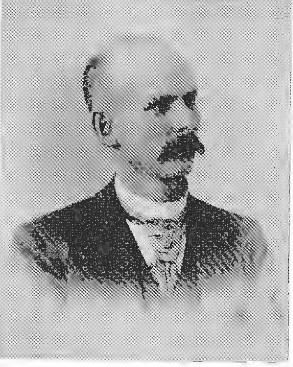
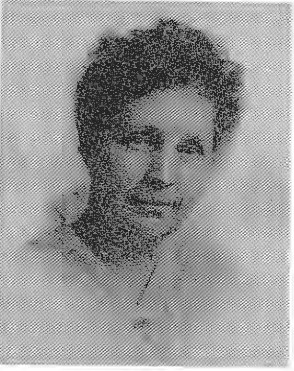
![]()
Arthur Melvin Blanding 1859- 1899
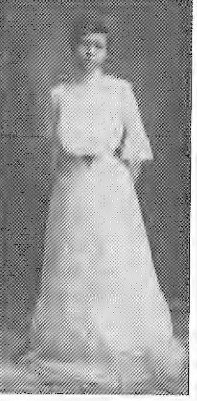
Ethel Blanding in 1903 when she graduated from high school.
Caroline Dix Blanding 1864- 1957
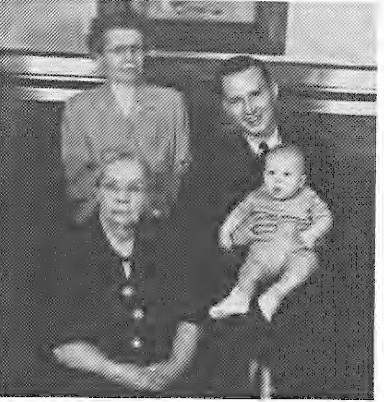
FOUR GENERATIONS, 1946: Ethel Blanding Hamilton, Roger Gordon Hamilton with Roger King Hamilton, Caroline Dix (Blanding) Sturtevant.
![]()
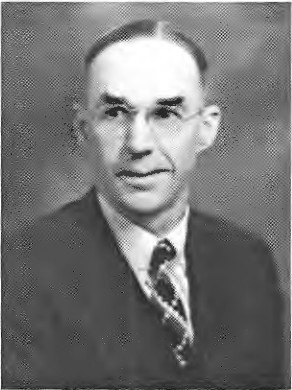
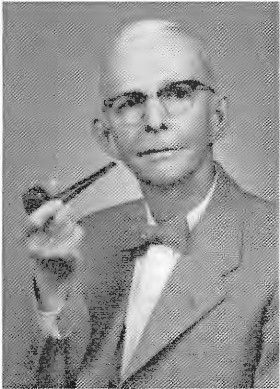
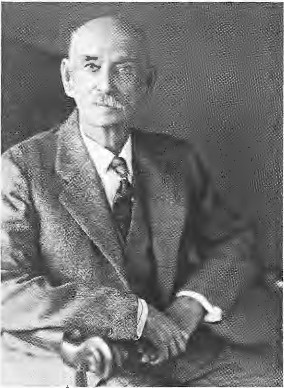
Henry Dix (Harry) Blanding 1887 - 1961
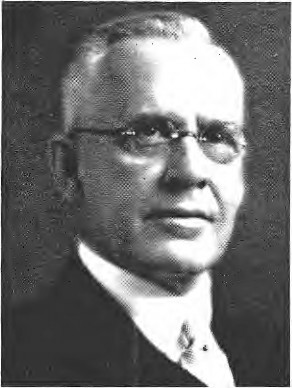
Charles Granville Sturtevant 1861 - 1933
Charles Woodman Blanding 1888 - 1971
Elon Galusha Holmes 1841 - 1931
![]()

;.: :. · •• ; : •• -1..
............ ·
The steamboat, :MINNIE CORLISS, on Detroit Lake, operated by the Pelican Canal Company, ArthurBlanding andJohn H. Smith, proprietors.
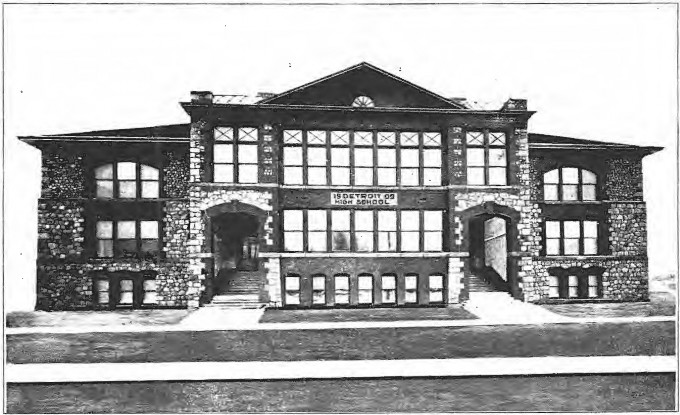
HOLMES HIGH SCHOOL builtin 1909 withfield stones supplied byarea fanners.
Like leaves on trees the race of man is found.
Now green in youth, now Withering on the ground
Another race the following Spring supplies.
Theyfall successive
And successive rise.
The Iliad - Homer